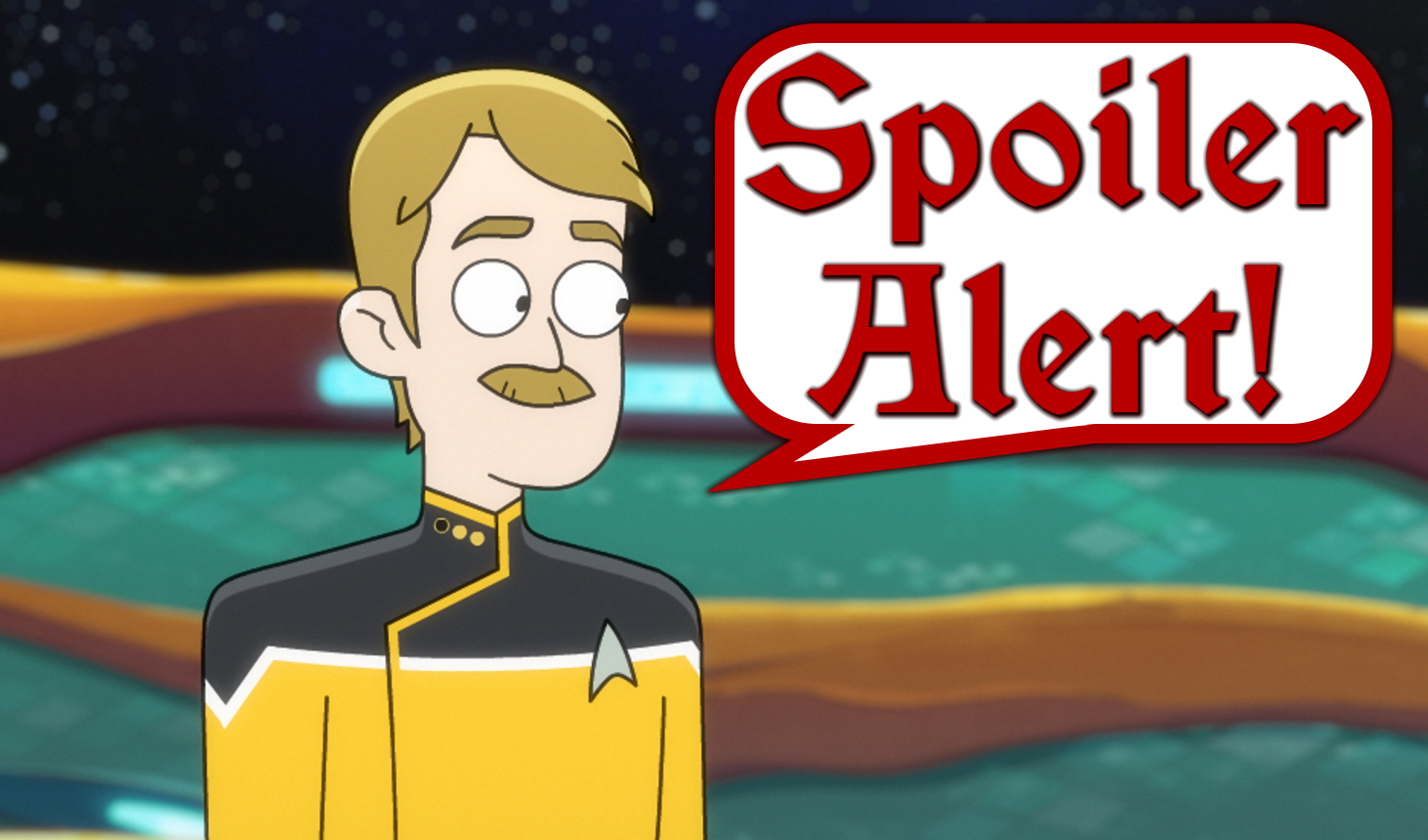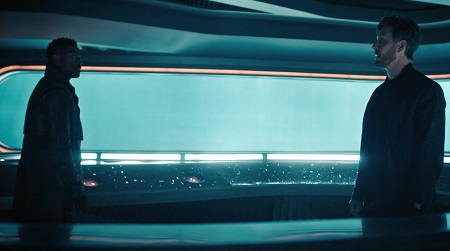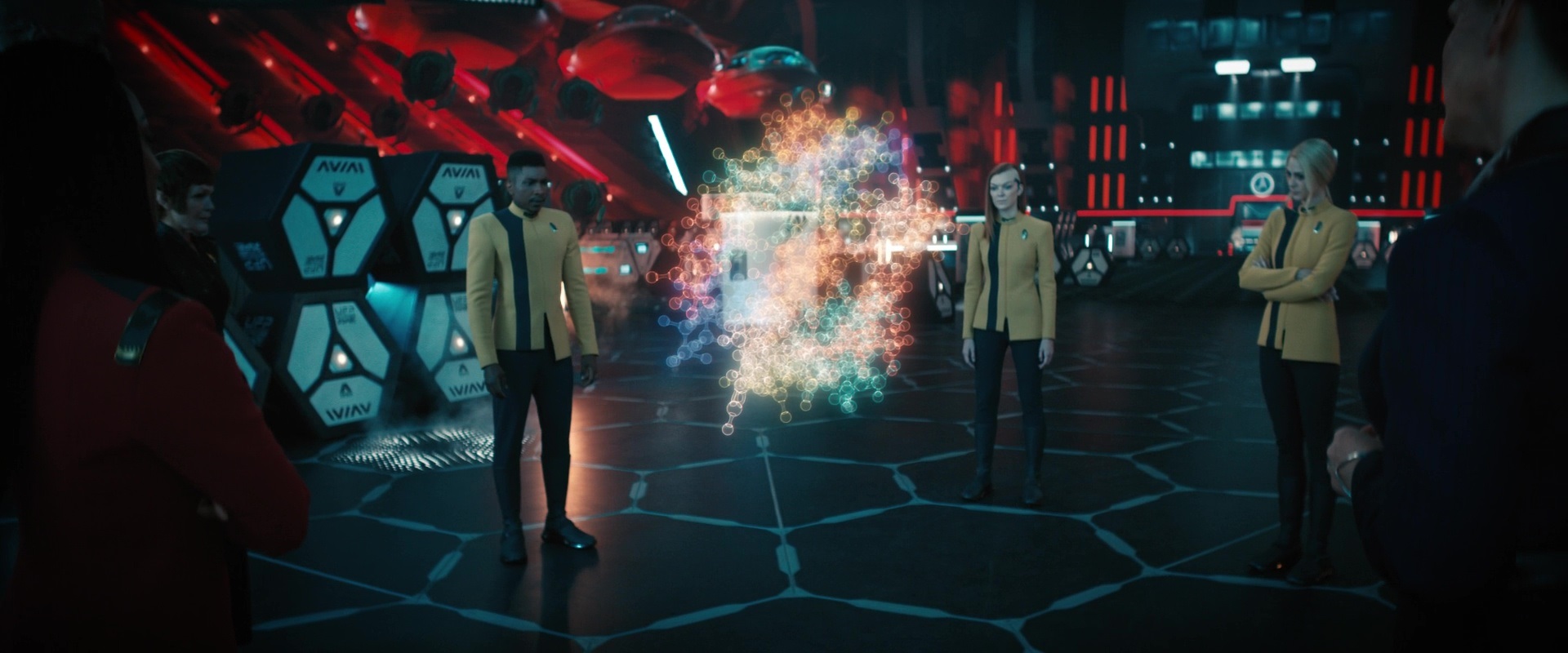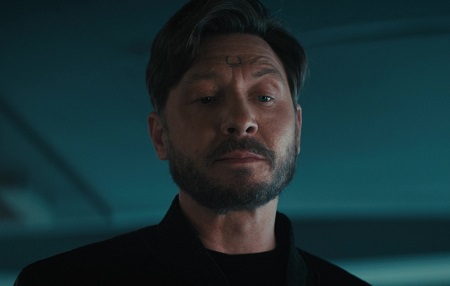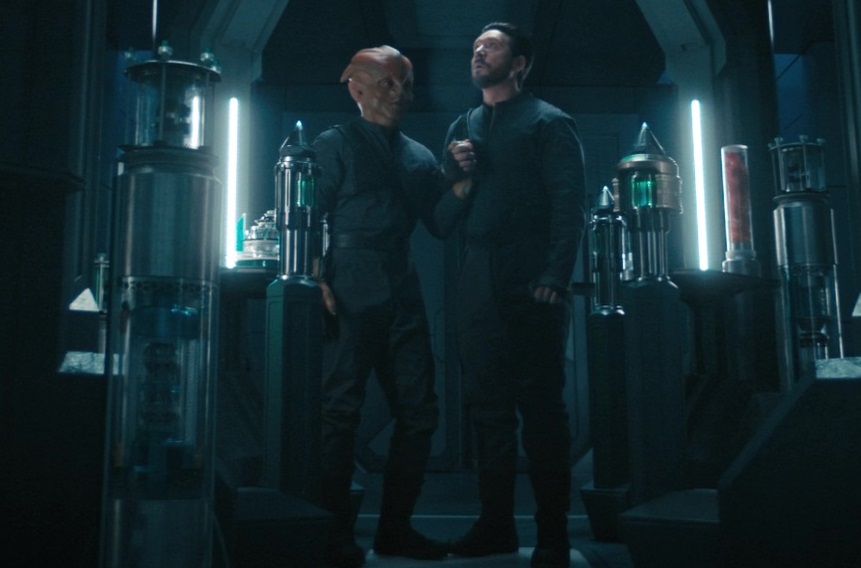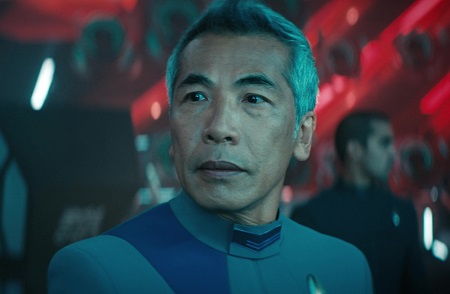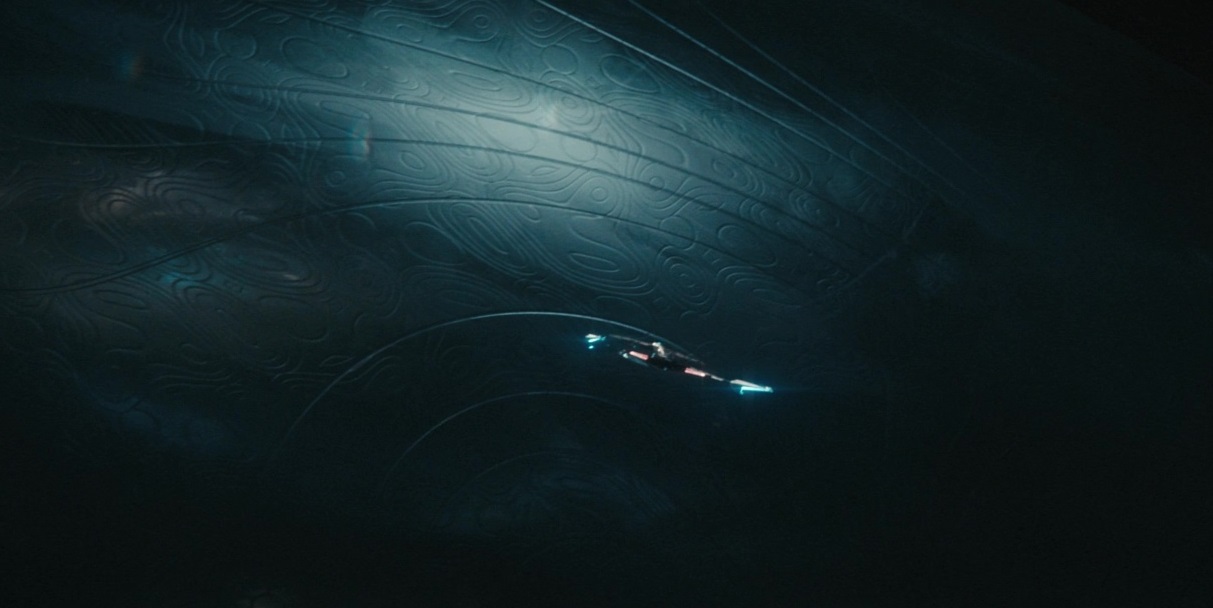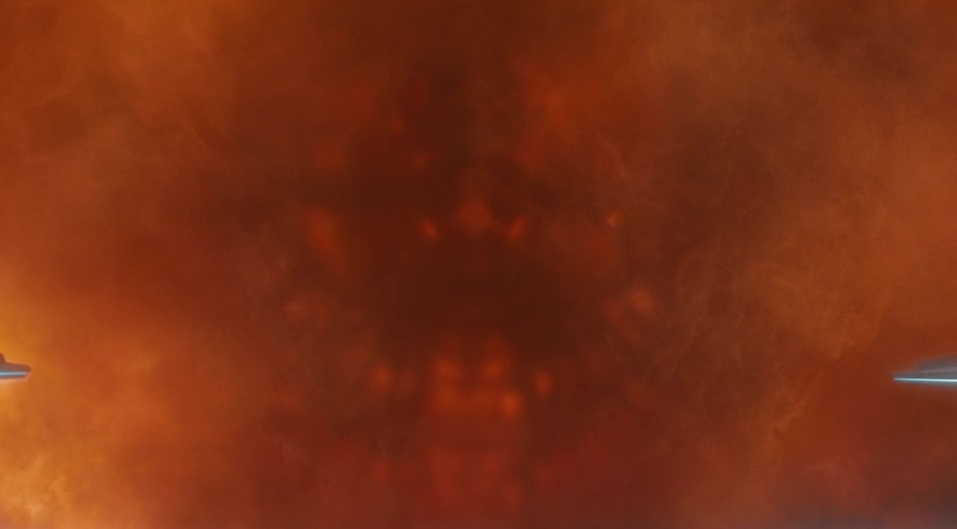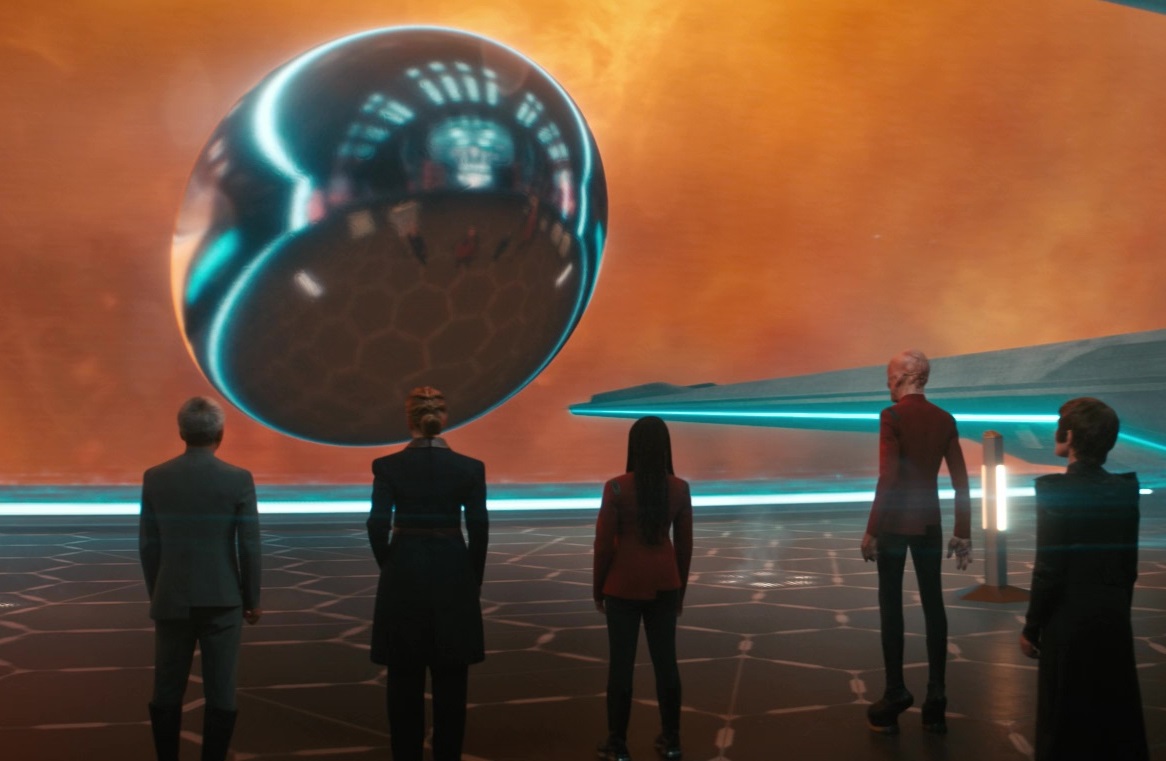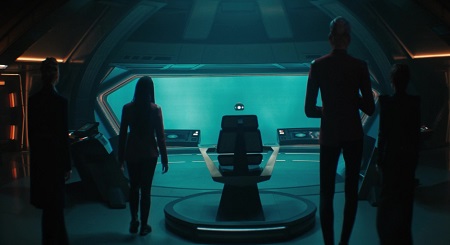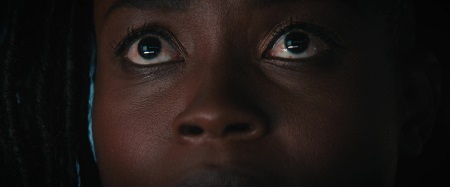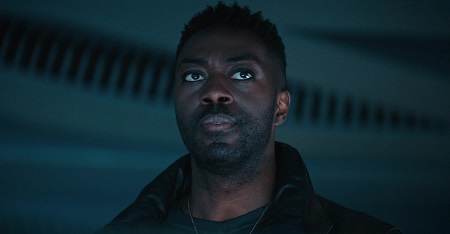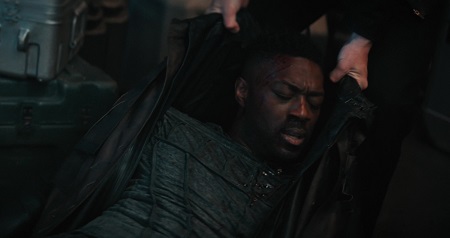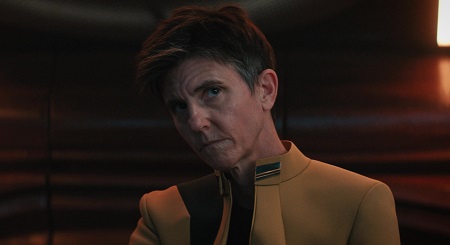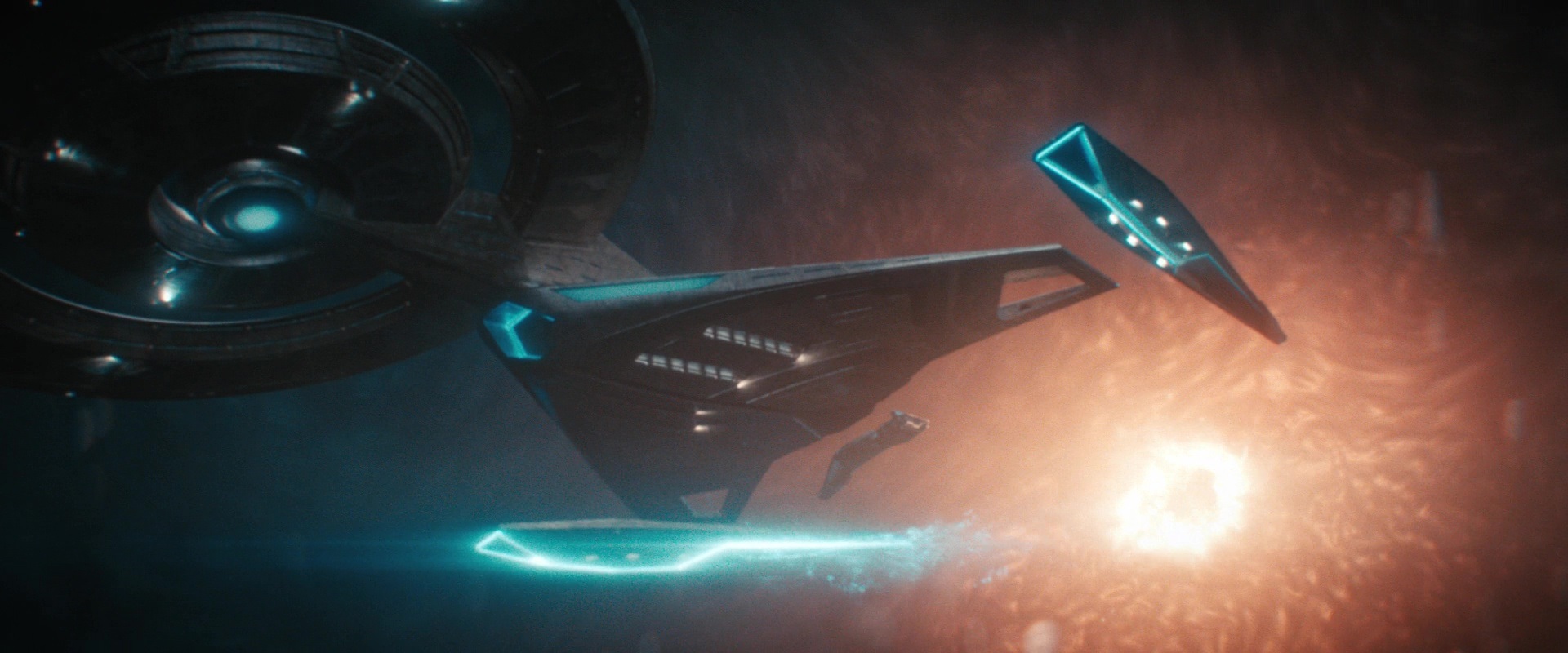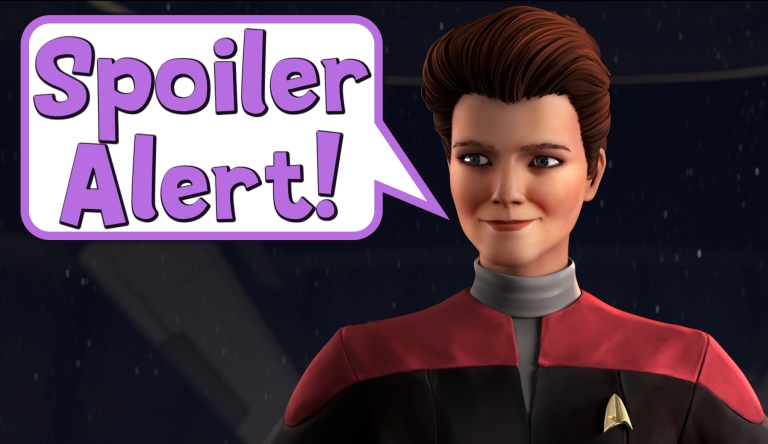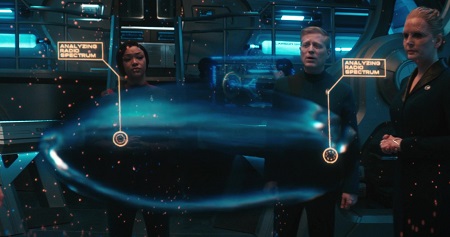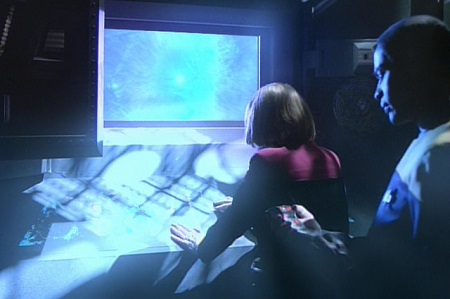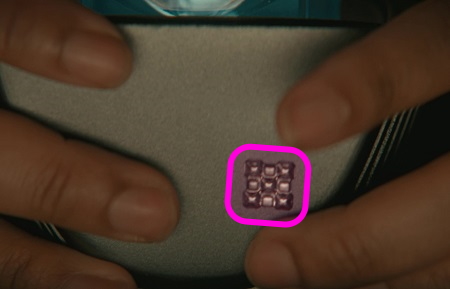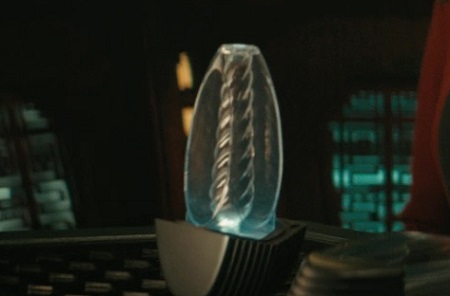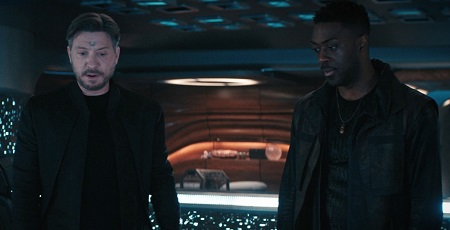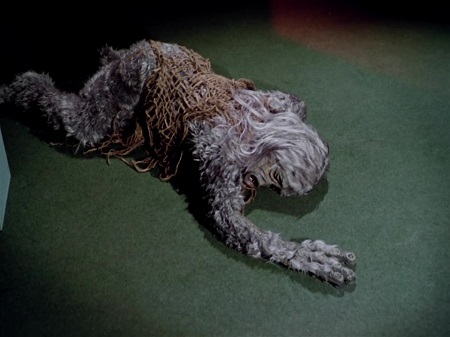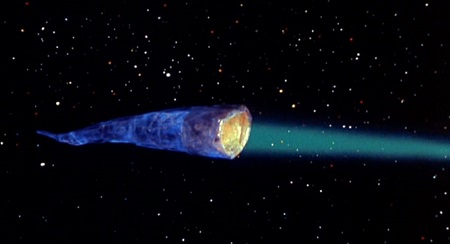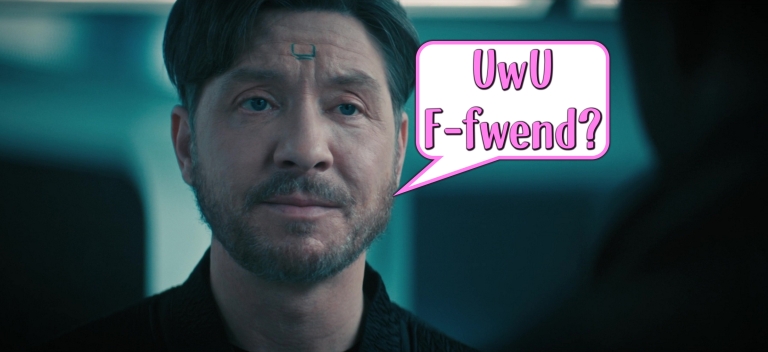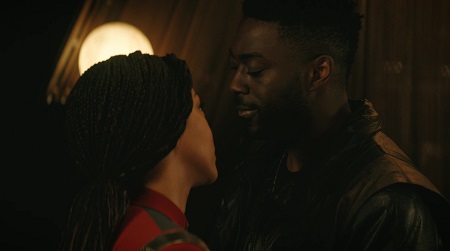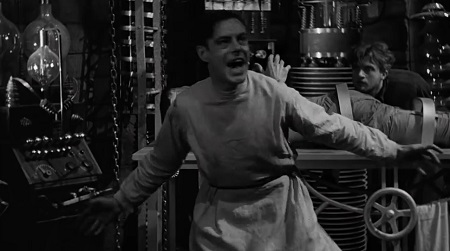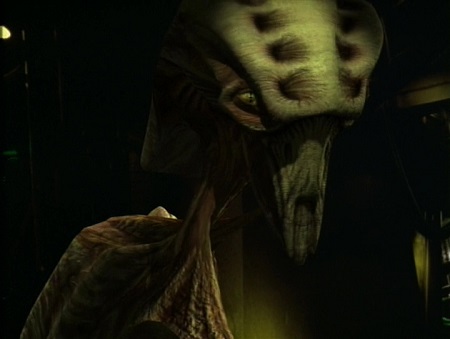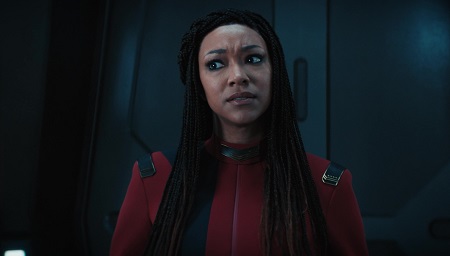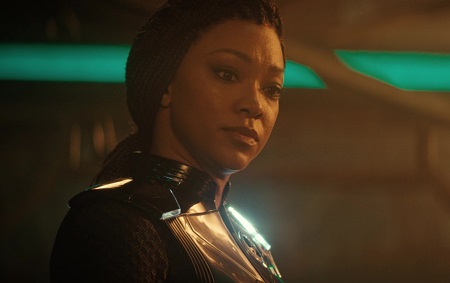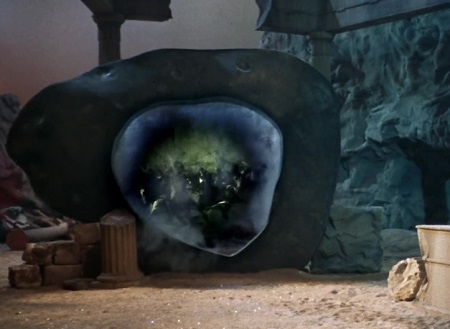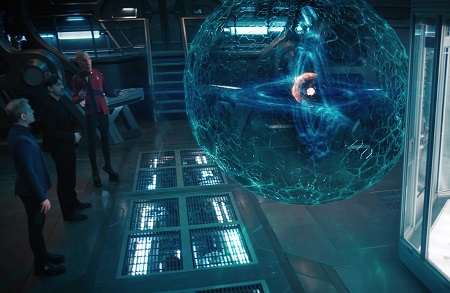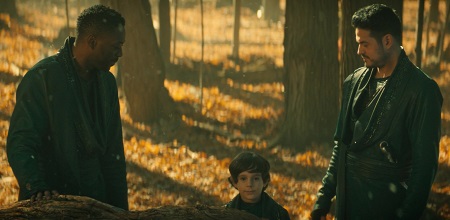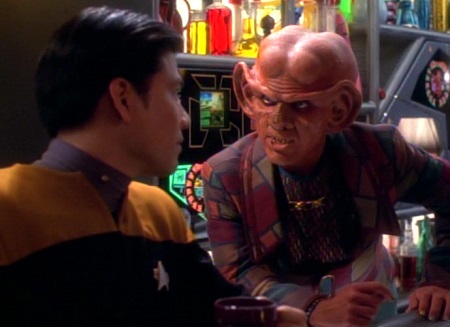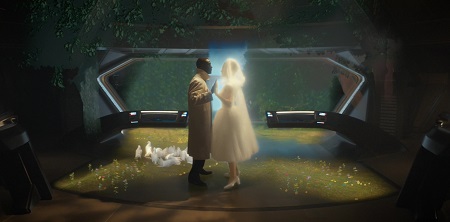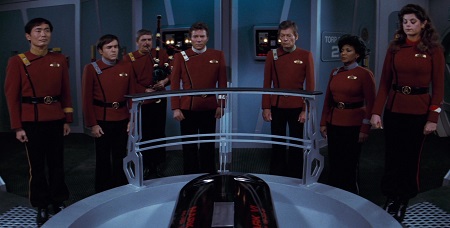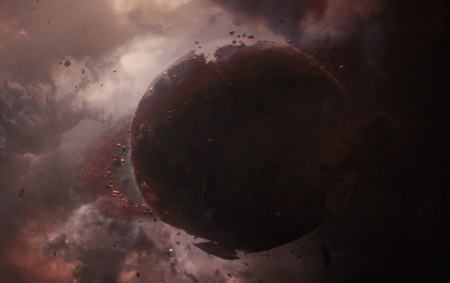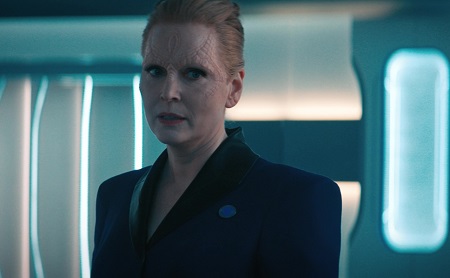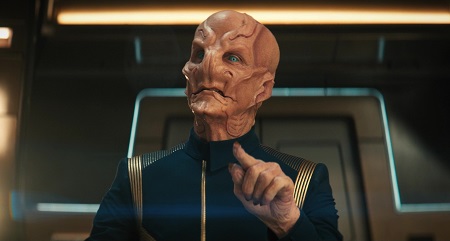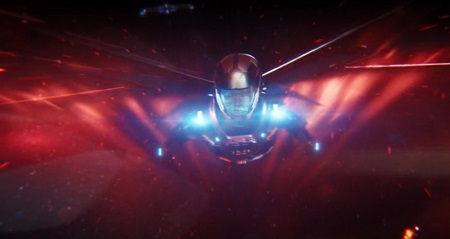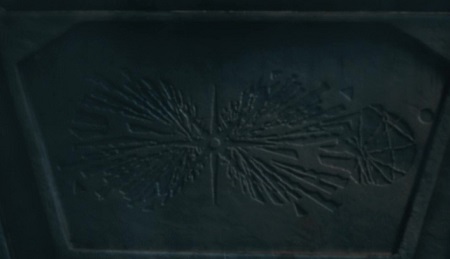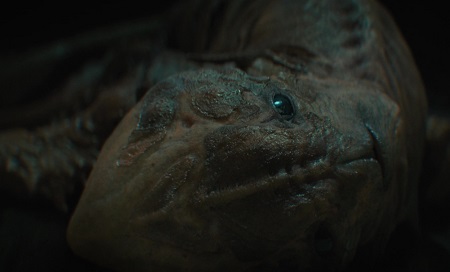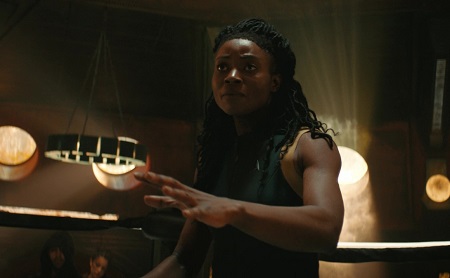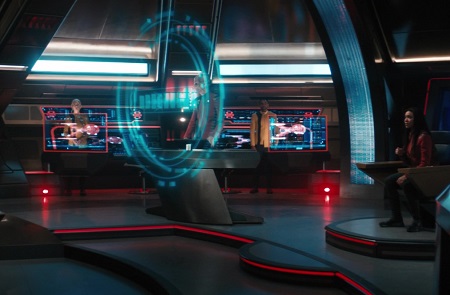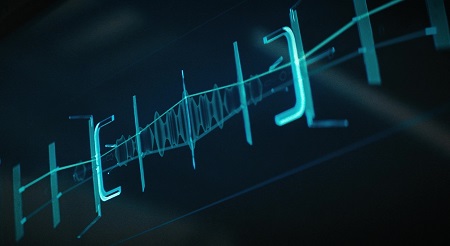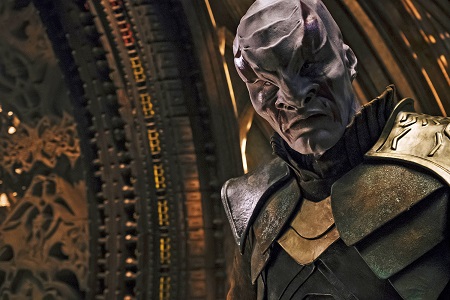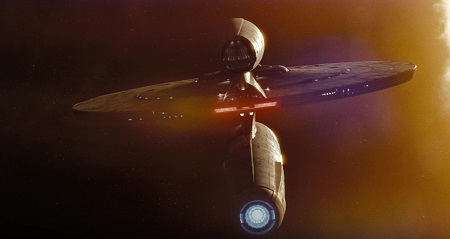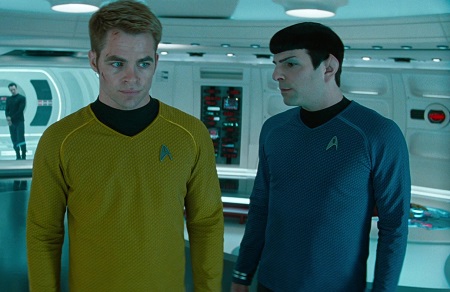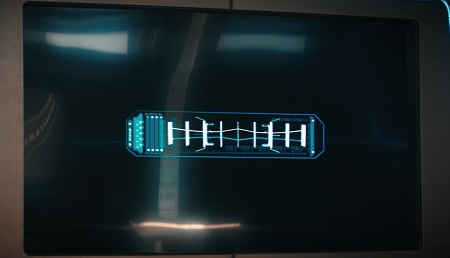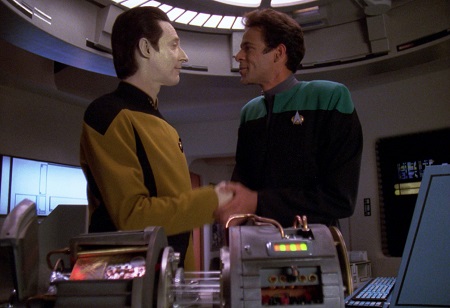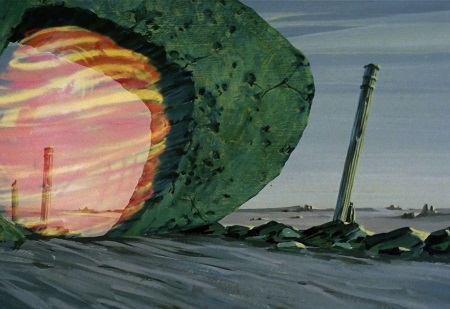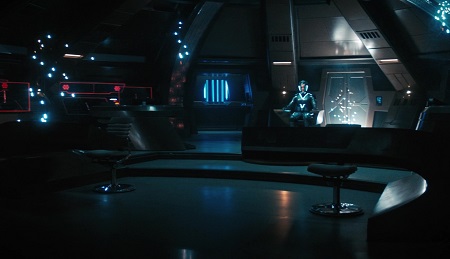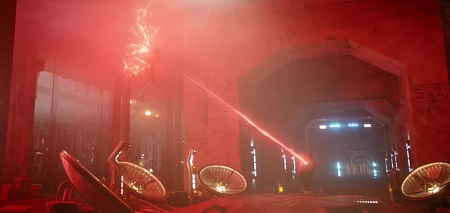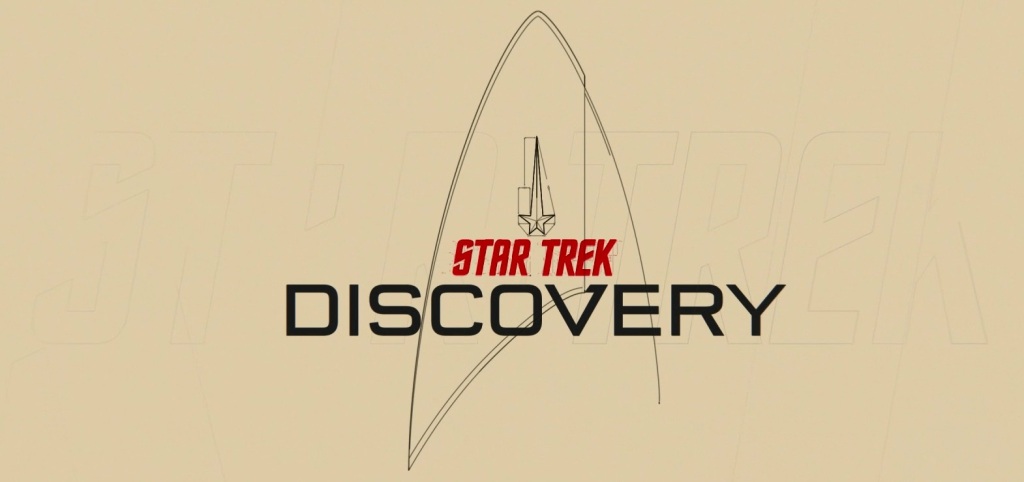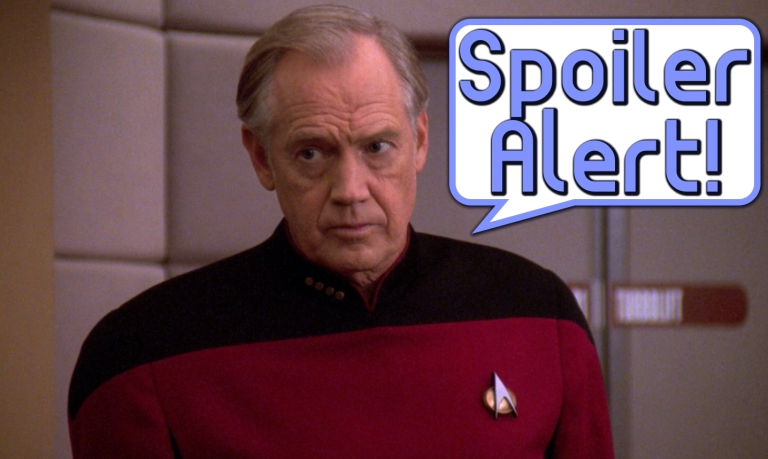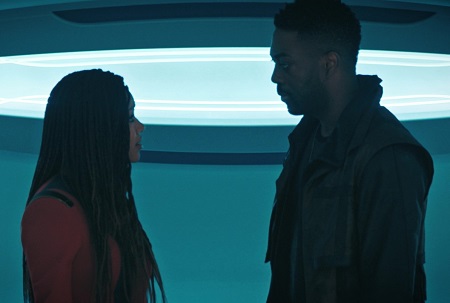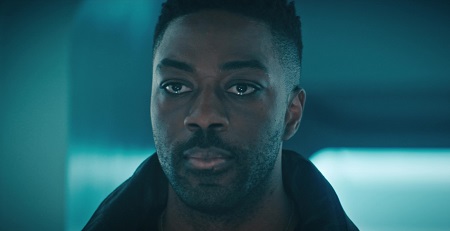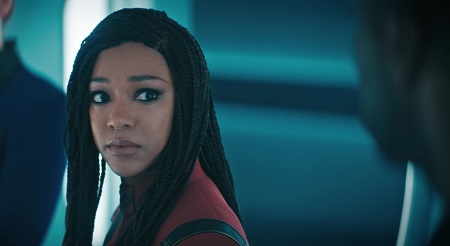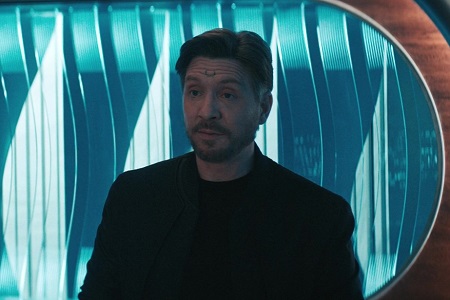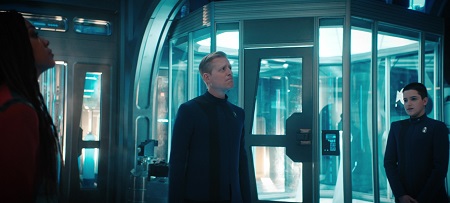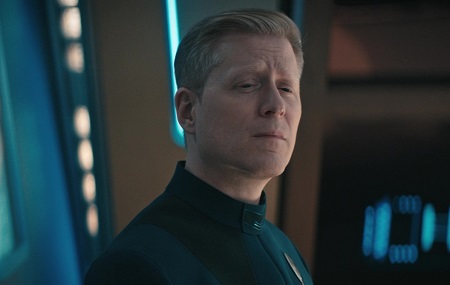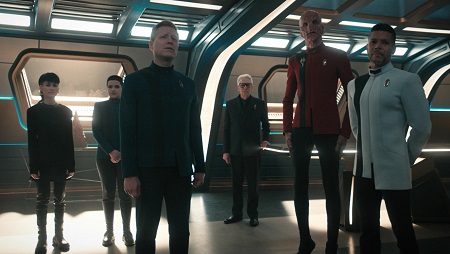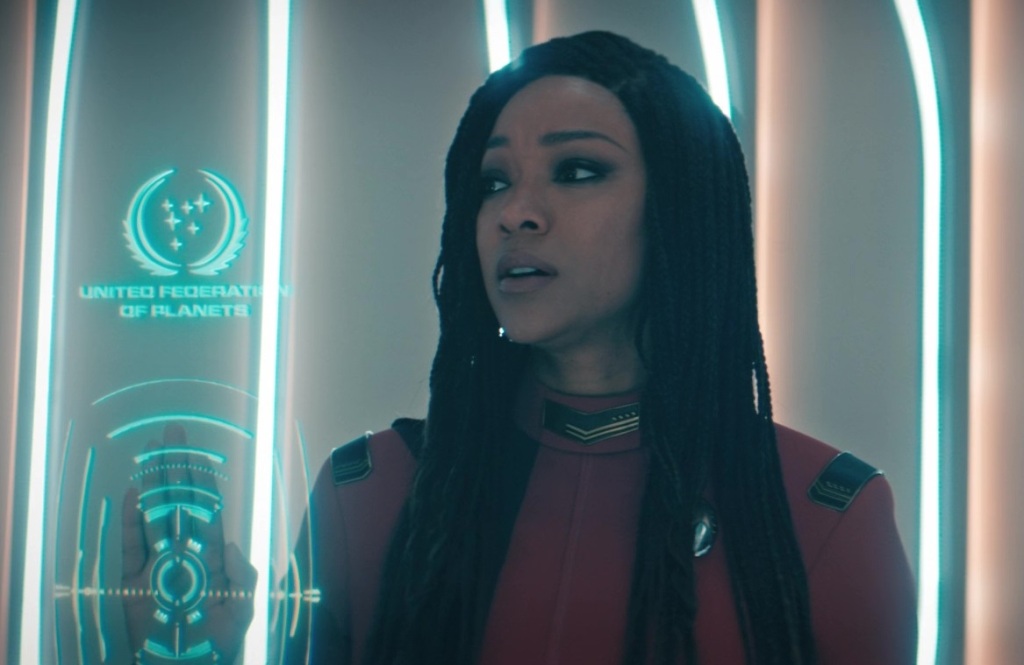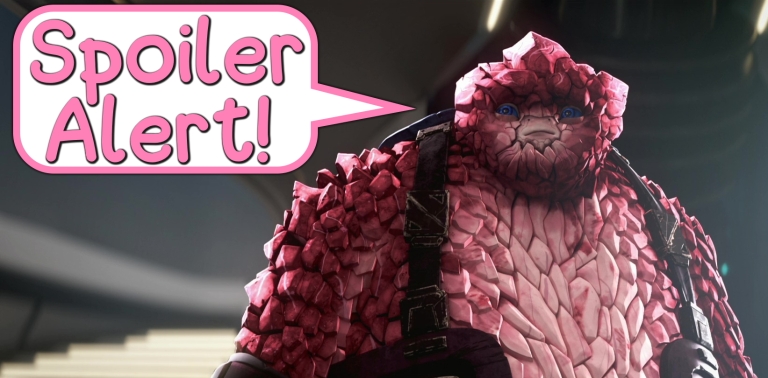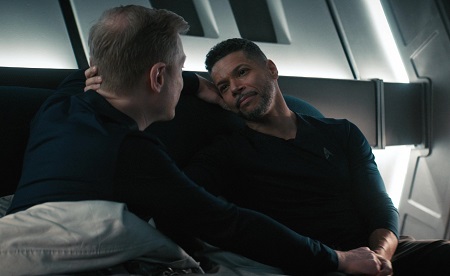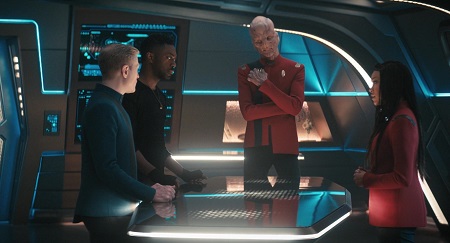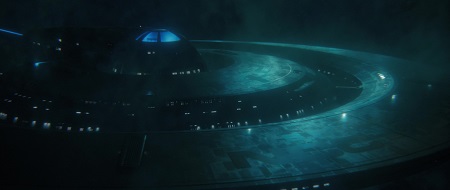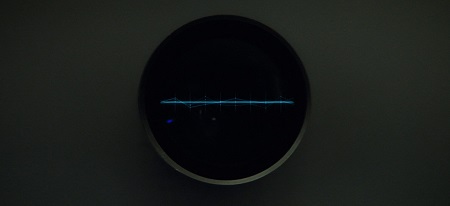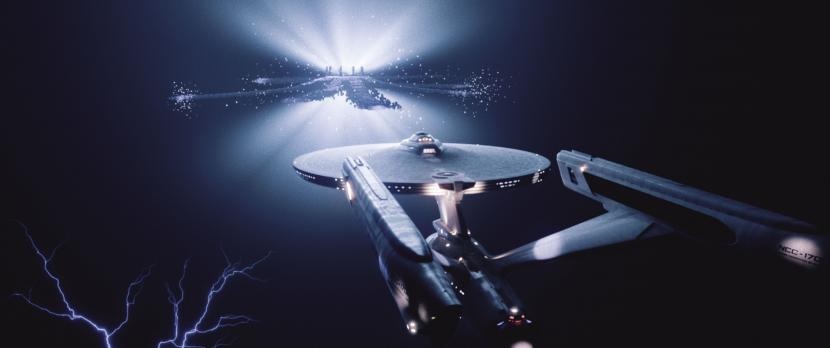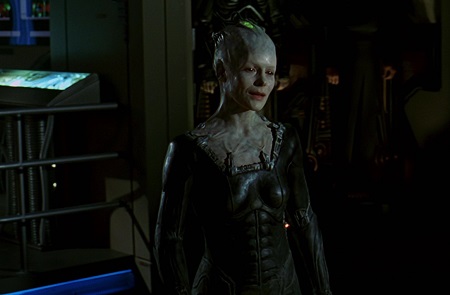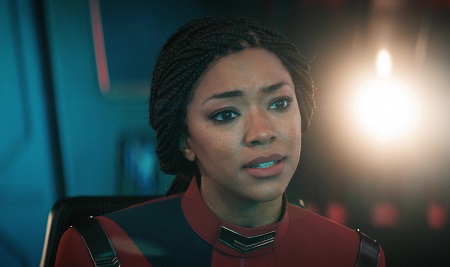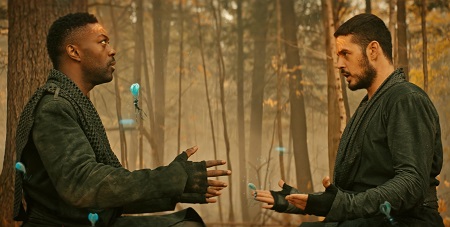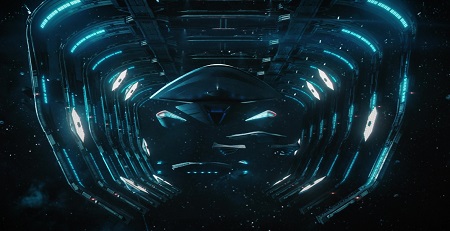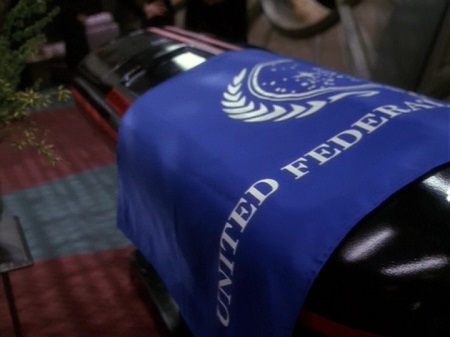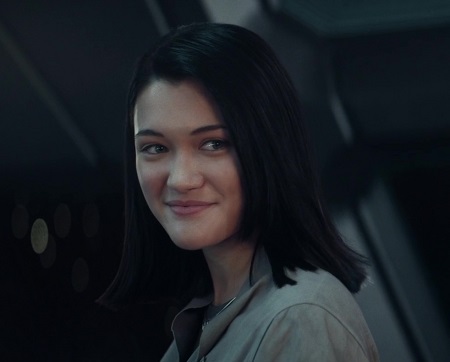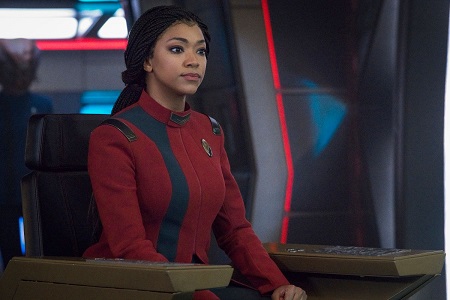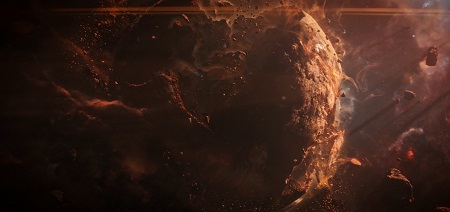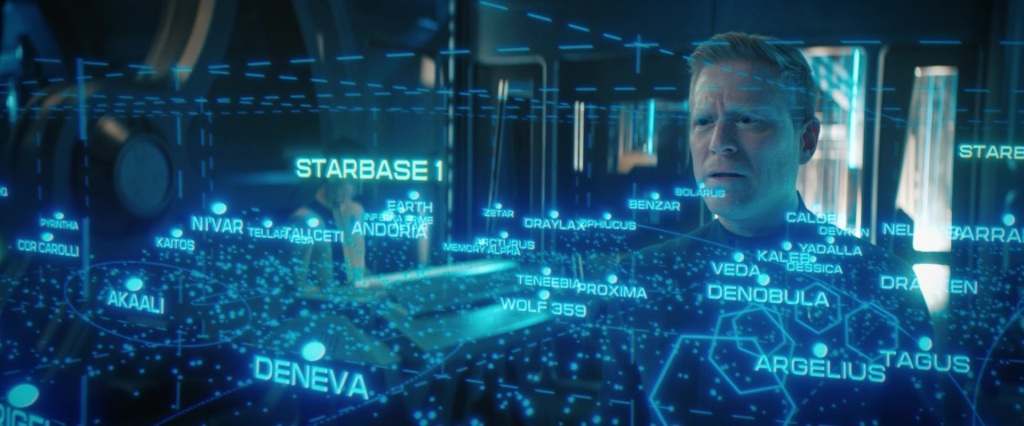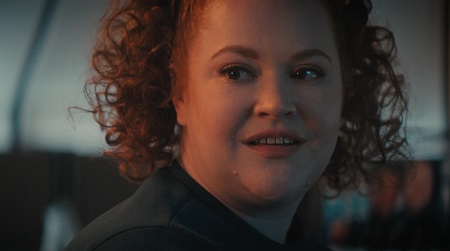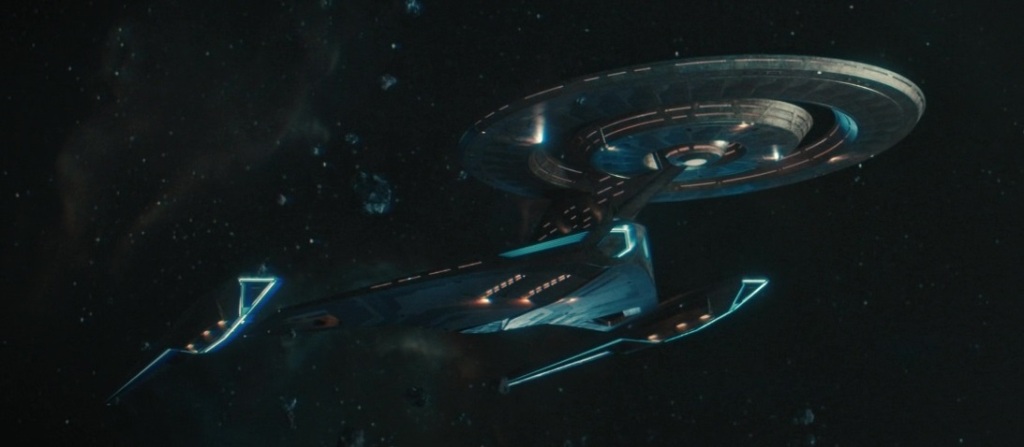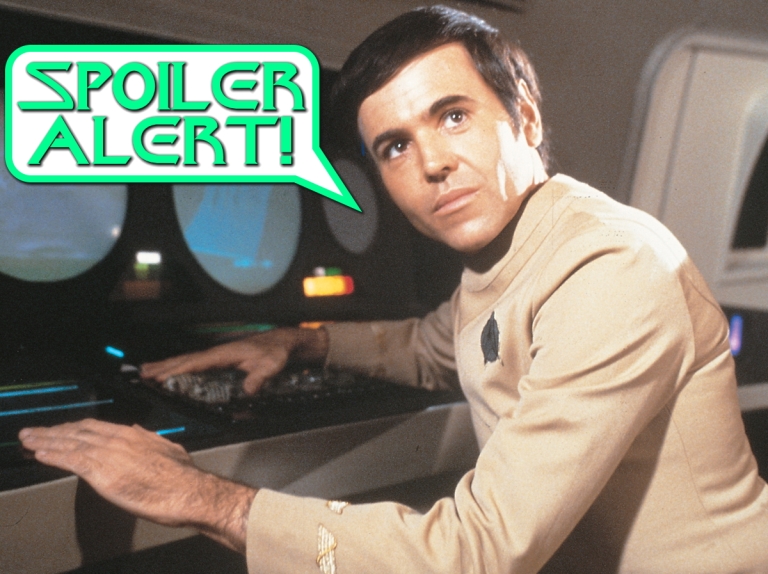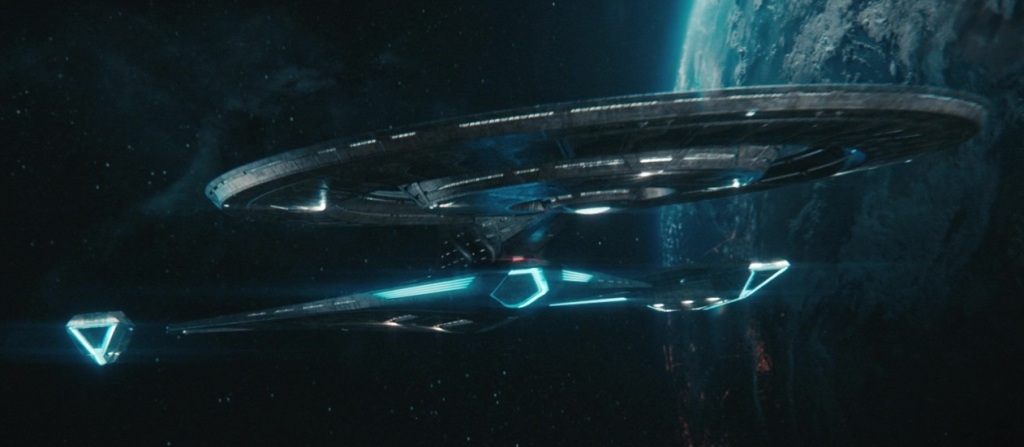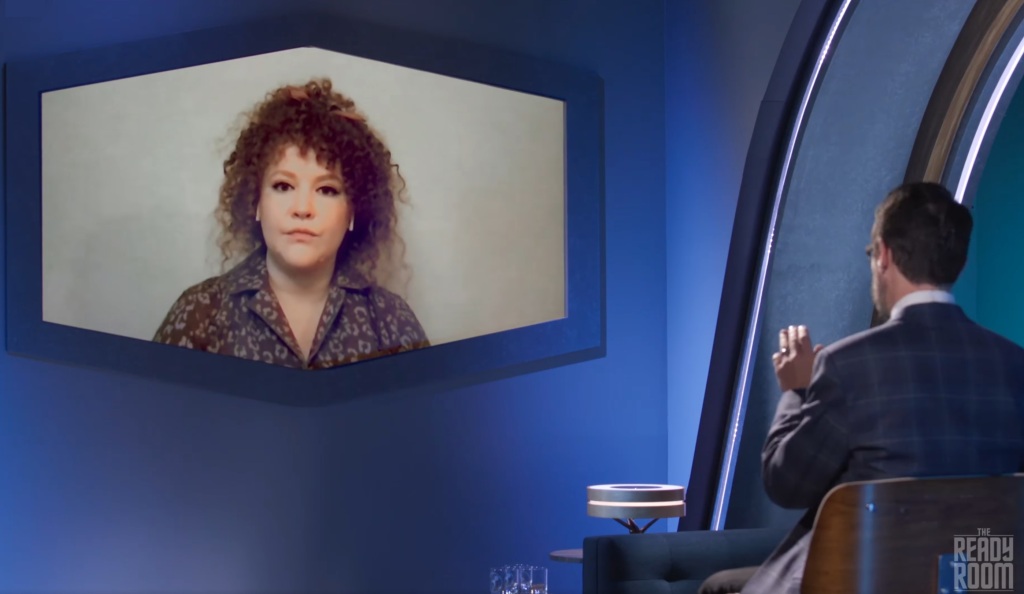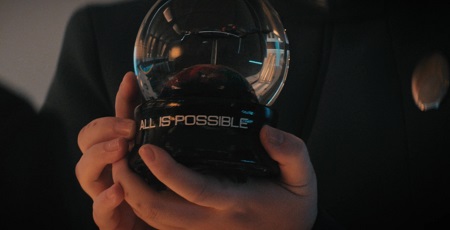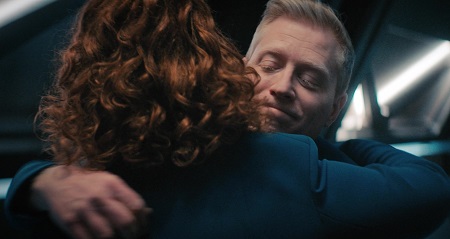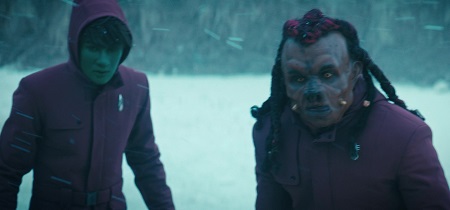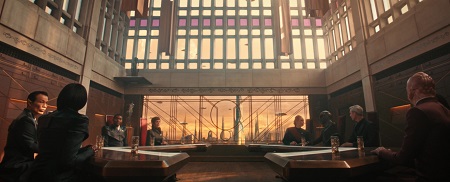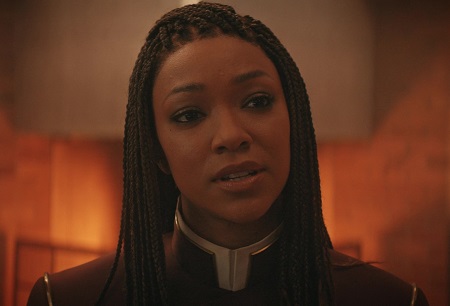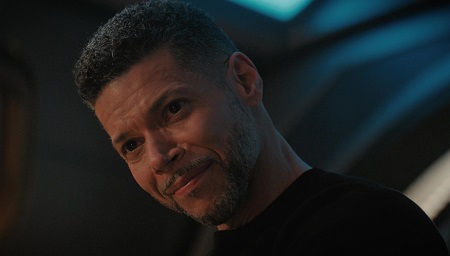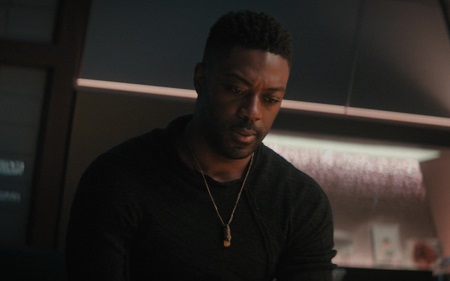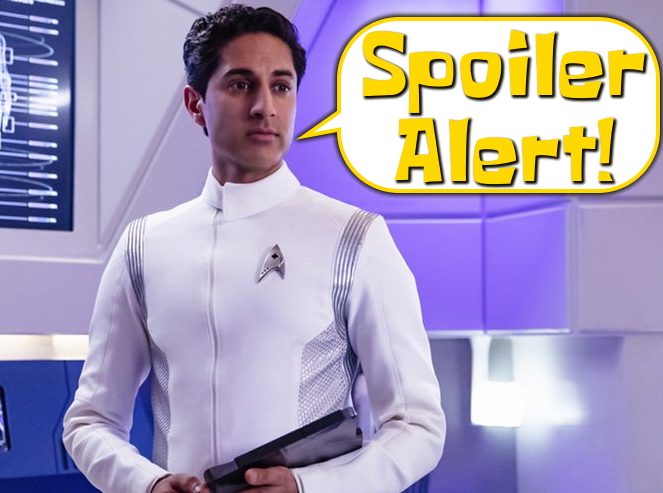
Spoiler Warning: There are spoilers ahead for Star Trek: Discovery Seasons 1-4.
I cried a lot while watching Coming Home. It was an incredibly emotional episode, one that hit all of the notes that it was aiming for and brought the season to a close in style. We can say definitively that Season 4 ended on a high, having saved the best for last. In fact, Coming Home might just be the best episode of the entire season!
From almost the first minute, the emotional punches started coming – and they didn’t let up until the epilogue. Captain Burnham and the entire crew went on a rollercoaster ride as they battled to stop Tarka, to get Unknown Species 10-C to listen, and to save Earth and Ni’Var from destruction. The episode was well-paced, with plenty of energy to keep things exciting but without ever feeling rushed. And there were some wonderful visual effects and animation work as we finally got an unobscured look at Unknown Species 10-C.
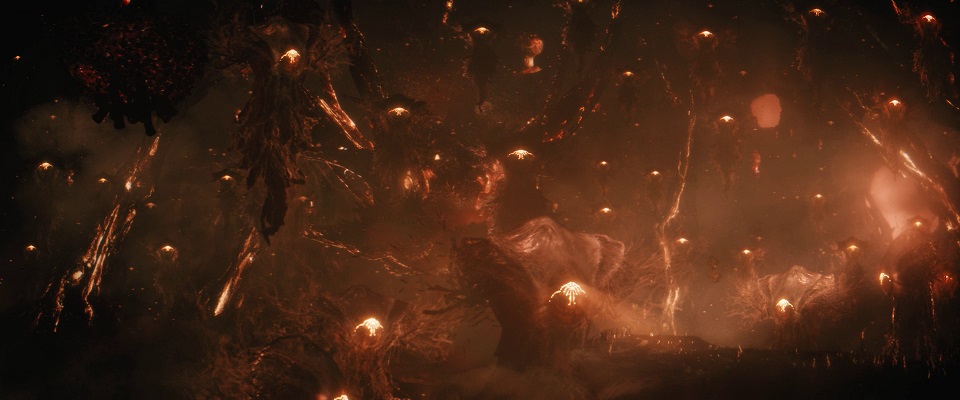
I had a wonderful time with Coming Home, and thinking about Season 4 as a whole, the finale is one of the strongest offerings. That contrasts with Season 3, where the end of the Burn’s story felt like a non-sequitur, if not an outright letdown. In that respect, it’s nice to see that Discovery has grown, adapted, and perhaps even taken on board some of the feedback received about the Burn and Season 3 in general. The creative team can be pleased, I think, that they did a better job this time around.
All that being said, there are some issues that are raised by Coming Home. The episode itself was great, and even some of the storylines that I’d been less invested in were paid off in emotional style. But thinking about the episode as the concluding chapter of a thirteen-episode season, I do have some complaints about absences, about characters who weren’t well-used, and about specific storylines that didn’t get the kind of payoff I’d been hoping for. While these points don’t detract from a wonderful and emotional episode in Coming Home, they do count against Season 4 as a whole.
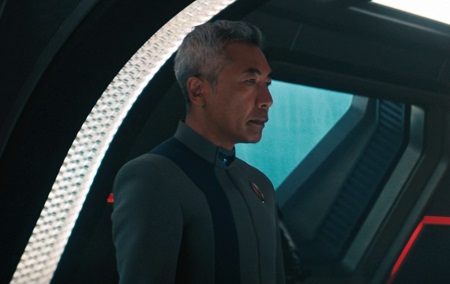
In the weeks ahead I’d like to do a retrospective of the season, and when I do I’ll go into more detail about some of these complaints. But with Coming Home being the season finale, I’d be remiss not to mention them here. This was the last chance for Discovery to do something significant with some of these narrative points – especially when considering that Season 5 will almost certainly go in a different direction.
Ruon Tarka’s abrupt turnaround from an understandable and even sympathetic character to a bold-faced villain was not handled particularly well, and while Coming Home went some way toward reversing that and bringing back some of the nuance that had made him such an interesting character in the first place, it came too late. Tarka’s story – much like Tarka himself in his final moments – ran out of road, and ended in an unspectacular and unsatisfying fashion, with no real payoff to his quest to reach Oros and Kayalise.
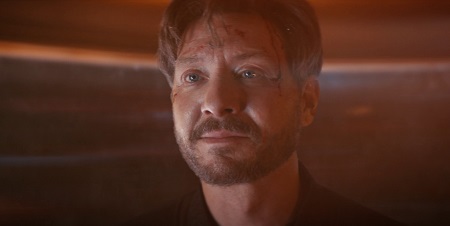
The scenes between Tarka and Book were beautifully constructed, and the raw emotion that both David Ajala and Shawn Doyle brought to screen is undeniable. The performances were fantastic, and Coming Home found enough time to show off these moments despite having plenty of other narrative beats to get through.
Despite that, however, the damage to Tarka’s characterisation had already been done. The complex and nuanced character that we met in The Examples, half a season ago, had been developed slowly over several episodes. His desire to use the power source at the heart of the DMA was explained through a series of flashbacks that introduced us to his long-lost friend Oros… and it feels like none of that really went anywhere. There were the ongoing themes of grief and loss that have been running since Season 3, and I guess we could argue that Tarka represents a different kind of reaction to those things than other characters. But even then, this side of the story doesn’t feel particularly strong.
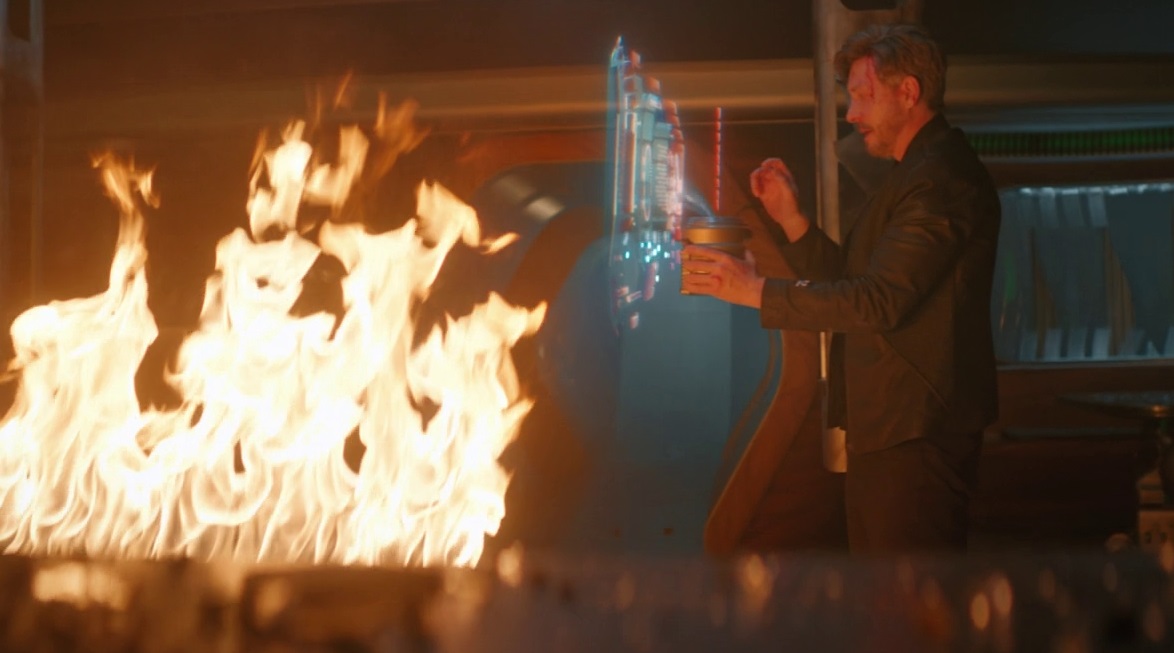
It was nice to see that, in his final moments, Tarka seemed to come around to Book’s way of thinking. As he stood on the wrecked bridge of Book’s ship, awaiting the inevitable, he’d taken several steps back toward being the complex character that we believed him to be in his earlier appearances, and I do appreciate that. It wasn’t that there wasn’t time to pay off Tarka’s well-established story. It’s just that Discovery chose not to.
This was a story that, at the end of the day, didn’t need Tarka. It didn’t need a villain to be outsmarted and killed in the final act; all the pieces were in place for a story of first contact with Unknown Species 10-C that was tense, interesting, and engaging without him. There was more than enough drama and excitement in that premise to make Tarka’s addition unnecessary; fluff to pad out a season-long story that I’m sure I’m not alone in feeling had been padded out far more than it should’ve been.
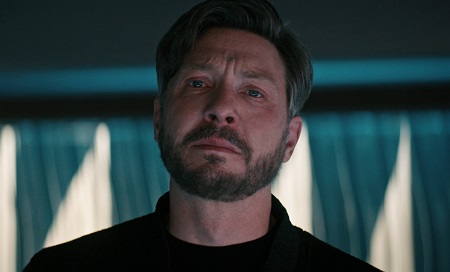
Season 4 could have been structured differently, with the Tarka and Unknown Species 10-C stories going in different directions. If one story had concluded around the time of the mid-season break, the second half of the season could’ve followed another related but separate story… and when both sides of the story were overstretched by running for as many episodes as they did, perhaps that would’ve been preferable.
But that’s less about Coming Home than it is about the structure of the season as a whole! Despite my waning interest in the Book and Tarka story, Coming Home pulled out a complex and emotional ending for both characters. It wasn’t the way I would’ve necessarily hoped for nor chosen, but once the decision had been made to kill off Tarka in this way and to have the fake-out over Book’s death, Discovery executed it about as well as possible.
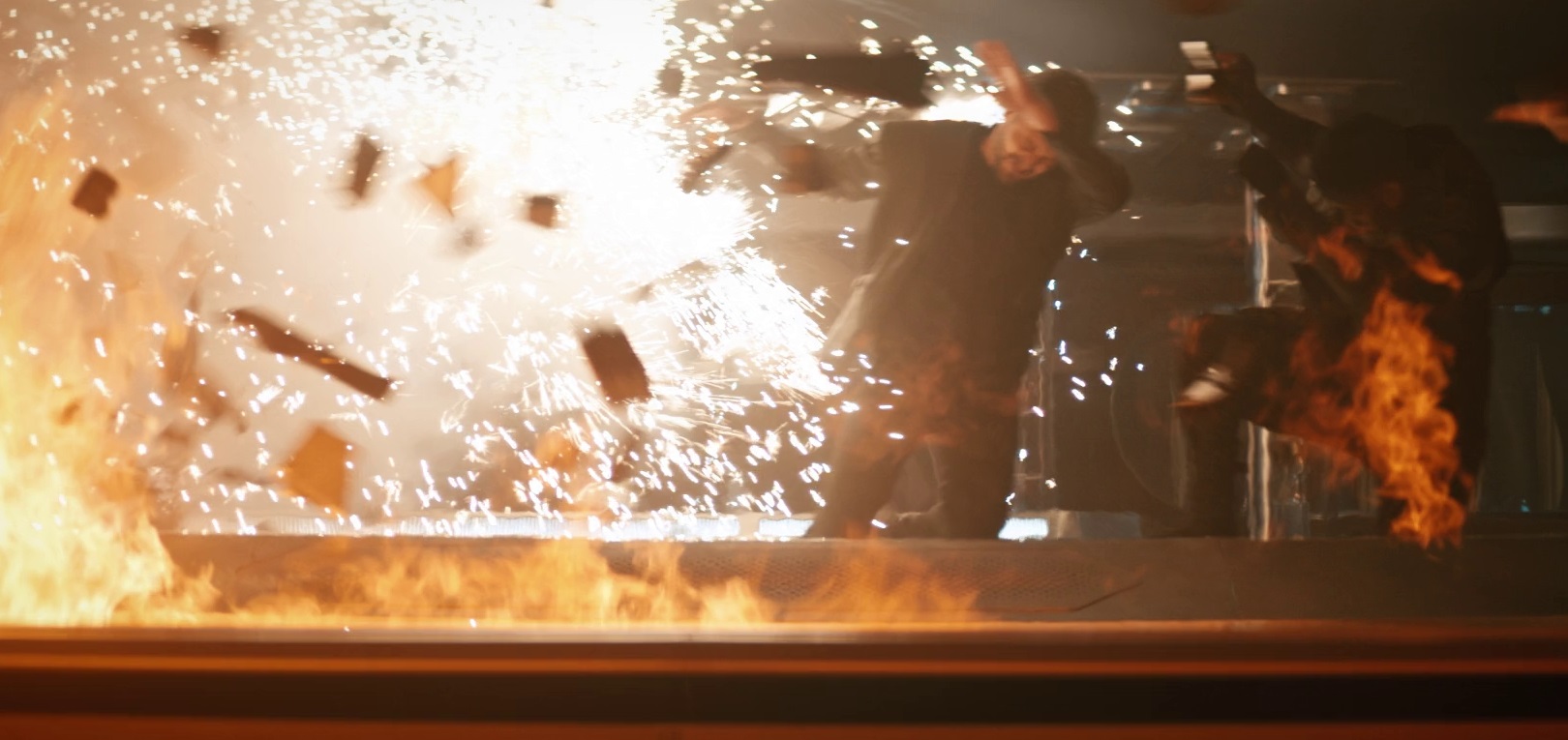
Going into the finale there were genuine concerns for Book and Reno’s survival. While a fifth season has been confirmed, neither character was guaranteed to appear in it, and there was a real possibility that one or both could’ve died as Tarka tried to execute an increasingly desperate (and, sadly, an increasingly nonsensical) plan. When it came to the moment of Book’s apparent death, it thus felt like he was really gone; there was no part of me saying “this is all just a fake-out.” And again, this was one of many emotional punches that Coming Home set up and delivered perfectly.
Book’s survival was also kept hidden by the story – we weren’t immediately shown him alive with Unknown Species 10-C – which kept things going as other storylines played out. As a fake-out, I think it worked pretty well. It made Book’s return in a pillar of light feel genuinely wonderful, and took Captain Burnham on a rollercoaster that allowed Sonequa Martin-Green to really show off her emotional range. Both as a story point and on the technical side of things, it worked well for Coming Home.
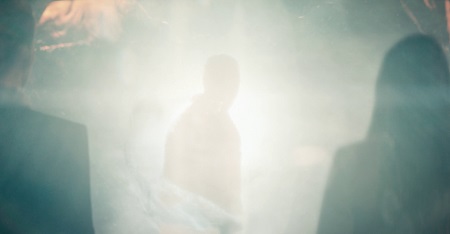
But, as I’ve found myself saying numerous times as the season has worn on, it means that Discovery has yet again given all of its characters some pretty serious plot armour. In an individual episode we can forgive that a near-death situation resulted in survival, or that an apparently-dead character like Book was safe all along. But when we consider the season overall, no one aside from Tarka was actually killed. Despite the incredibly dangerous situations that the crew found themselves in, and despite the overwhelming odds stacked against them by Unknown Species 10-C, the DMA, Tarka, and everything else they went through, they all survived.
Television storytelling has moved on since Star Trek’s early days – something that the very nature of Discovery is itself testament to. To run an entire season this way – with another “galaxy-ending” calamity for the crew to deal with, which they all survive – risks diminishing the threat felt in future stories. If we as the audience can feel confident that everyone will be fine, no matter what else is happening or how badly the ship seems to be blowing up, that robs the show of a significant portion of the excitement, tension, and drama that its storylines have done an otherwise good job at creating. Book’s fake-out “death” isn’t the problem in and of itself; it’s a symptom of a much bigger issue – the obvious lack of willingness on the part of Discovery’s writers to allow even the most minor of tertiary characters to be killed off. In 2022 that’s out-of-date, and it’s a storytelling mistake that will have to be addressed in future.
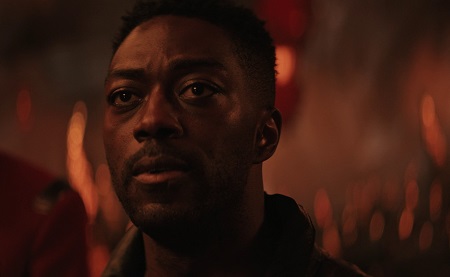
The whole “Earth is in danger” angle is a trope that I wish hadn’t been brought into the story this season. It’s such a played-out cliché, and it’s one which, as I noted a couple of episodes ago when it was introduced, risks making the end of the story feel formulaic. It was obvious two episodes back that Discovery wasn’t going to allow the destruction of Earth and Ni’Var in the final act of Season 4, so unfortunately I went into Coming Home with that expectation firmly embedded in my mind.
That doesn’t mean that the route to saving Earth was easy, and on the Federation HQ side of the story with Tilly and Admiral Vance there were some absolutely wonderful moments. The swooping arrival of the USS Mitchell – named for Discovery actor Kenneth Mitchell – hit all of the right notes for me, echoing moments like the Enterprise-E’s dramatic entrance during the Battle of Sector 001 in First Contact. In fact, all of the evacuation sequences worked well, and after her departure earlier in the season it was nice to welcome back Tilly – however briefly.
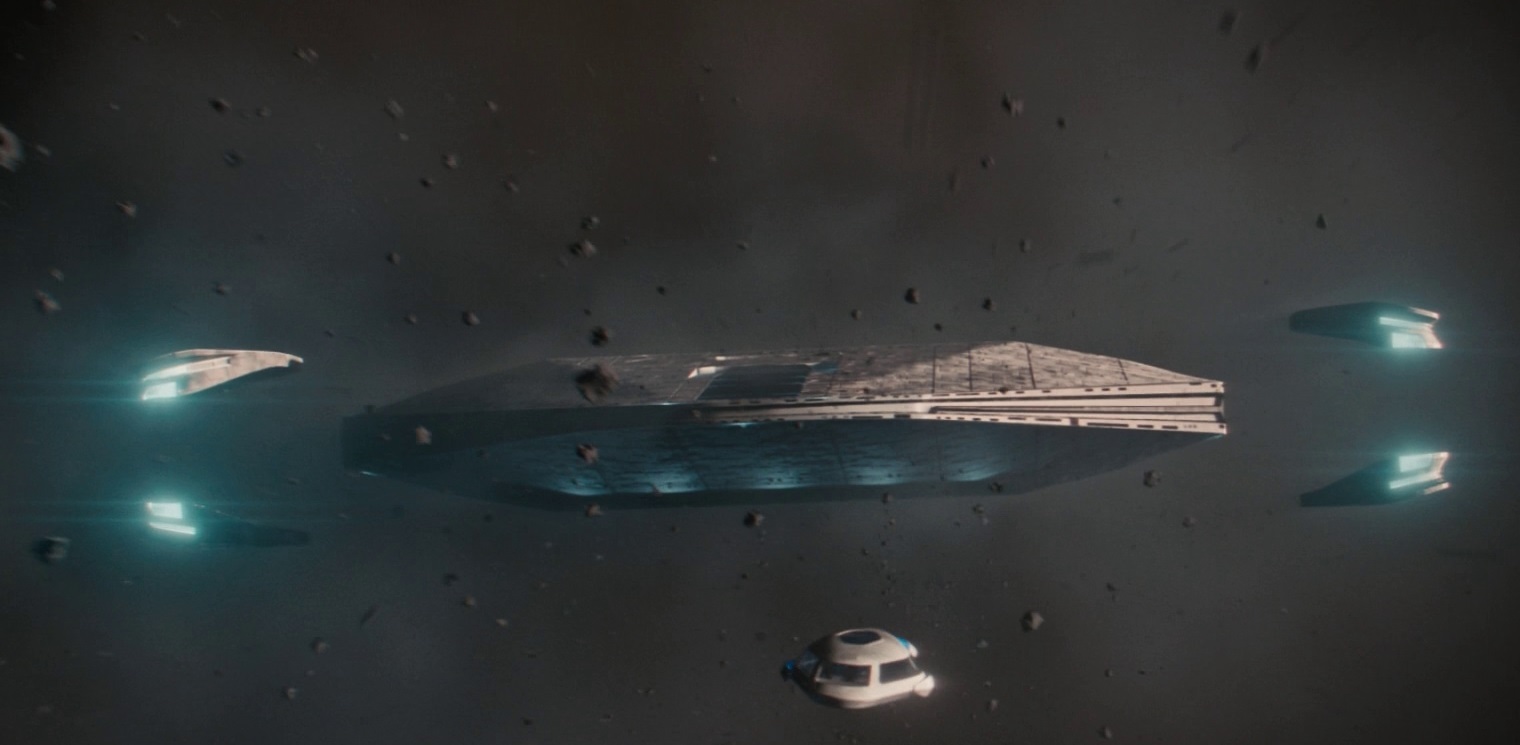
I’d have liked to have seen something earlier in the season to perhaps set up some kind of dynamic between Vance and Tilly, and that would really be my only criticism. The two didn’t feel like they had natural chemistry; I was acutely aware of the difference in status between the head of Starfleet and a character who, until a few episodes ago, was a lowly ensign. The two performers did well to sell it, but had we seen Tilly offered her role at Starfleet Academy by Vance, not Kovich, back in All Is Possible, I think we would’ve had some kind of baseline for their relationship. This would’ve let us see how far they’d come to be able to sit together and share a drink as they awaited what seemed to be the inevitable.
That said, I liked the evacuation sequences. In fact, this part of Coming Home might actually be my favourite – surpassing the meeting with Unknown Species 10-C, and definitely beating out the conclusion to Tarka’s story. There’s something about a doomed, heroic “last stand” that always gets me no matter how it’s played, and for Vance and Tilly, they knew that they didn’t have any control over the DMA situation. They had to do their jobs knowing there was nothing they could do to prevent what was happening – they were relying entirely on Captain Burnham and the USS Discovery.
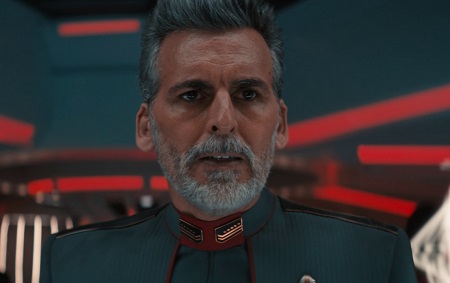
That setup led to a real unexpected highlight. I maintain it would still have worked were it not Earth in the firing line, but setting aside that particular narrative gripe, the scenes at Federation Headquarters were pitch-perfect. Seeing Federation HQ warp in to offer to help, even though Earth was not a member of the Federation, really epitomises what the Federation is all about. That is the spirit of Star Trek, in many ways: offering to help while asking nothing in return. The DMA placed Earth in danger, and Starfleet rode in to help without even having to think twice.
Admiral Vance and Tilly both came to embody that Federation spirit in these sequences, and they gave it their all to get as many people to safety as they possibly could. Choosing to remain behind to cover the escape of the final ships was just the perfect end for both of them – and something I could absolutely see both of them being willing to do. As they sat down, knowing they’d given their all, and shared a drink, I was absolutely blown away by this unexpected and wonderful addition to Coming Home.
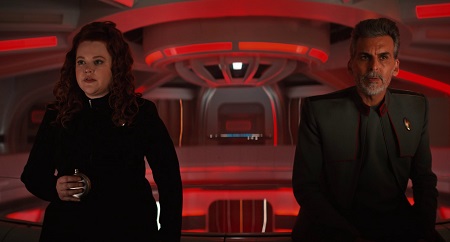
We also got to spend a little more time with some of Tilly’s cadets from All Is Possible. After those characters fell somewhat flat in that story, it seems like at least some of them have grown into their roles as Starfleet cadets, which was nice to see. It wasn’t a huge part of this side of the story, but it was a neat way to include something that had been established earlier in the season.
There was, unfortunately, a gaping hole on this side of the story. It wasn’t really apparent until Coming Home was drawing to a close, and it didn’t detract from the way any of these incredibly emotional moments felt as they unfolded. But in retrospect I have to ask: where was Dr Kovich? Is he just a gag character now, someone whose lines tease stories that sound interesting but go nowhere? Because that’s what it feels like. After Dr Kovich’s line in The Galactic Barrier that he had “more important things” to do than make first contact with the species who built the DMA, I was hoping that Discovery would pay that off somehow… but it didn’t happen.
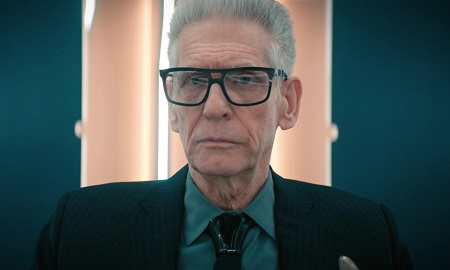
We’ll deal more with the Dr Kovich situation when I take a look back at the season as a whole, but suffice to say that his absence from this part of the story was noticeable, and several threads that seemed to tease that he was working on something interesting with Lieutenant Commander Bryce ultimately just went nowhere. This isn’t a situation like the Picard Season 1 finale, either, where the meandering story of the season ran out of road and didn’t have enough time to pay off its stories… this was a conscious choice on the part of Discovery’s writers. They teased us with Dr Kovich all season long, feeding us little crumbs of information that seemed to set up something about his character… and then just dropped it, perhaps with a snide laugh behind their hands, in the finale.
As the episode wrapped up, it seemed as though Discovery had one last surprise up its sleeve. As the President of United Earth was about to arrive, I wondered if we might be about to see Dr Kovich when the doors wooshed open – if not, perhaps a character from a past iteration of the series. When it was revealed to be a new character I wasn’t disappointed; it seemed as if the point the series was making with the buildup to her reveal was that the President of the Federation, the President of United Earth, and the Captain of Discovery are all women, which I thought was a neat way to go.
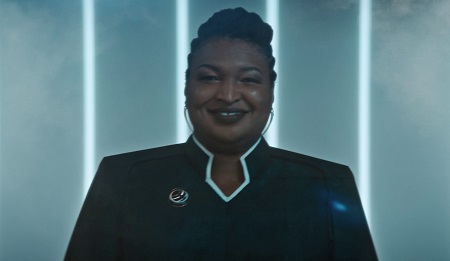
But there was more to it that, as a non-American, I missed at first! The President of United Earth was played by Stacey Abrams, an American politician and writer who’s been quite politically active on the left wing of US politics. This casting choice is interesting – and perhaps a little provocative! There will be people on the conservative side of things who will feel upset, and Discovery knew this well in advance of casting this character. Doing so was a way for the series to really emphasise its progressive principles, which have been front-and-centre just as they’ve always been in Star Trek.
Star Trek is no stranger to cameos and stunt castings, before anyone jumps in to say that this one is somehow different because of who it is. The King of Jordan had a cameo in Voyager once upon a time, and there have been real-life astronauts, scientists, and other celebrities who’ve all joined in for guest-starring roles. Considering that Stacey Abrams is, as far as I’m aware anyway, a newbie to acting, I think she did a wonderful job!

I adored this scene with the President of United Earth. Set aside the casting for a moment, because the content of the scene made a huge impact on me. Coming Home had already been a hugely emotional story, so seeing Earth rejoin the Federation after two seasons outside it was pitch-perfect. Stacey Abrams and Sonequa Martin-Green excelled in their moments together, and what resulted was an optimistic and emotional high to bring the episode – and the season – to a conclusion.
There are some interesting real-world parallels that the casting of someone like Stacey Abrams arguably hammers home. After the United States had pursued a nativist, isolationist policy for four years, the country is stepping away from that. United Earth rejoining the Federation could be viewed as symbolic of America’s return to the world stage. From a British perspective, it could be seen as a hope for the UK one day rejoining the European Union after the Brexit referendum. Star Trek has always used its sci-fi setting to look at real-world issues, and those are just a couple of possible ways we can interpret this emotional and uplifting end to the season.
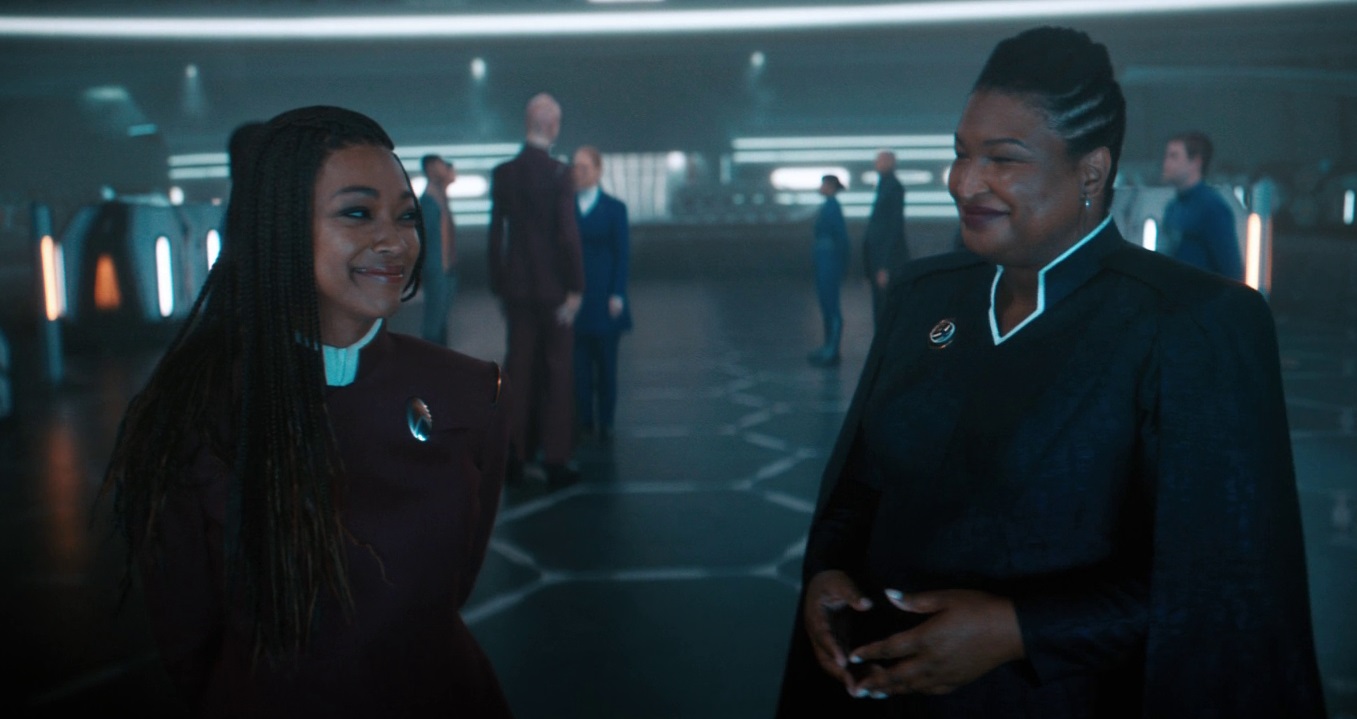
We’ve come all this way but we still haven’t talked about Unknown Species 10-C! The visual effects used to create one of the most “alien” races ever seen on screen in Star Trek were excellent, though I would caveat that by saying that the meeting place being a carbon copy of the ruin visited in Rosetta detracted a little from the way things looked. Recycling sets has been something that the Star Trek franchise has always done, but this moment was the crux of a season-long story, and I think more could’ve been done to give Unknown Species 10-C’s new home a new look, even if it was just in a minor way through changes and tweaks. It’s been a millennium since they lived on the planet seen in Rosetta, so if for no other reason than the passage of time we might’ve expected it to look slightly different.
That being said, I liked Unknown Species 10-C both in appearance and in concept. Star Trek has a long history of showing us alien races that look only slightly different to humans – and in some cases are completely identical! That’s never been a problem for me; I think it’s part of the suspension of disbelief that one has to have when stepping into the Star Trek galaxy. However, the rise of modern CGI and animation, combined with new technologies like Discovery’s AR wall, mean that some very different aliens can be created and can be blended with real actors. This blend was seamless in Coming Home – as it has been, with only a few exceptions, all season long.
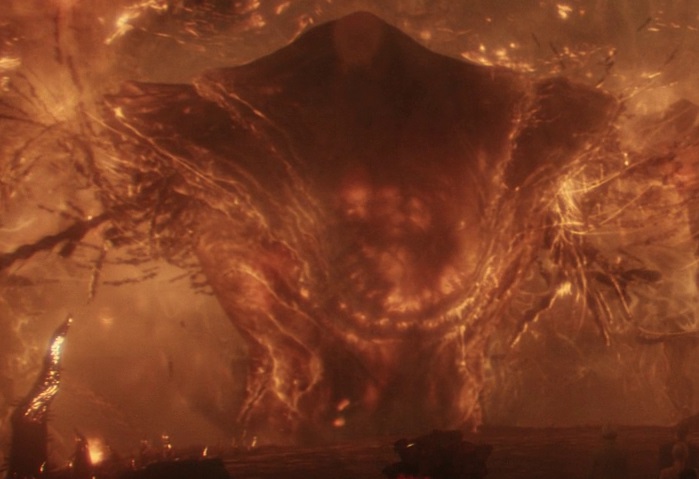
The story of bridging a communication divide is honestly one that I could’ve spent longer on. Much of the legwork had been done in Species Ten-C last week, so we got less of the minutiae that a “learning to understand one another” story can provide. But what we did get was interesting, and we got to see how Unknown Species 10-C didn’t mean to do anything wrong – their scans didn’t indicate that there were sentient life-forms in the areas that the DMA hit.
In that sense, we have a comparable situation to the Burn in Season 3. Unknown Species 10-C weren’t some horrible invading alien for Starfleet to heroically defeat; what happened was a genuine accident, one that they regret. That may not be enough for someone like Book, who lost his home, his family, and his entire race… but it’s a different ending, one that many other sci-fi franchises wouldn’t have even considered. Discovery pulled it off, and while the story leading up to it was imperfect and padded, it worked.
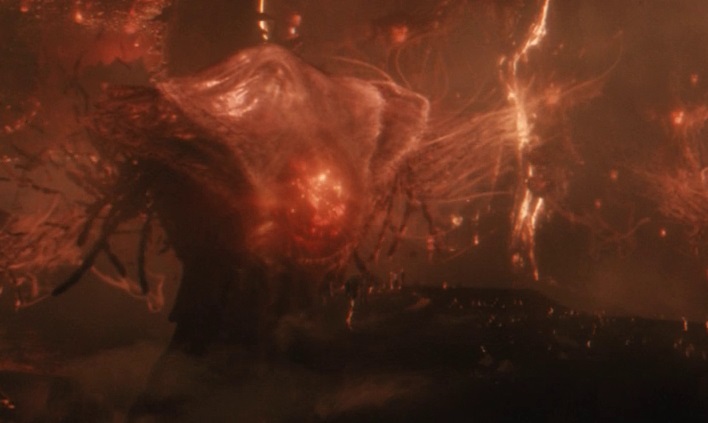
However, Discovery has now run four seasons with some variation of the “major galactic threat” storyline, and I think that framework needs a break. Not every story has to be about the entire galaxy, Earth, and the whole Federation being in danger – there can be just as much drama, tension, excitement, and emotion from stories that are smaller in scale. Just because a story doesn’t threaten life as we know it doesn’t mean it doesn’t matter, and how we as the audience respond to a story begins with the way the characters we’re invested in respond to it. So consider this a plea to all of Discovery’s writers and producers: try something different in Season 5!
I enjoyed the performance from Chelah Horsdal as President Rillak. For practically the whole season I couldn’t tell if we were going to get a “bad Admiral” type of character turn; President Rillak certainly seemed to have a Machiavellian edge that could have made for a wonderfully complex antagonist. In Coming Home, though, we got to see the culmination of her diplomatic efforts and her leadership of the Federation, both through the way the DMA threat came to an end and through Earth rejoining the organisation – something that had been one of her major objectives.
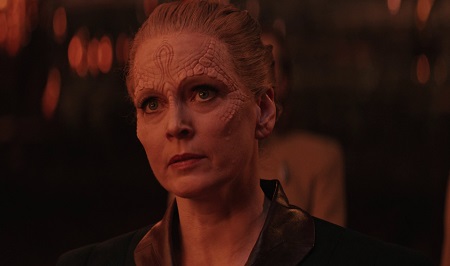
For what feels like the first time this season, Stamets had more than just a couple of lines. It was a shame that he couldn’t be present at the meeting with Unknown Species 10-C; I’d have rather seen him there with Dr Culber and Adira to stand alongside Captain Burnham than some of the secondary bridge characters, really. But it was still nice to see Stamets and his family coming together at the climax of the story, and how Dr Culber forfeited his own chance to go on the away mission to be with them.
Stamets and Culber formed Discovery’s emotional core in the first season and the third, with a disappointing foray into a relationship squabble in the second. But aside from a few smaller scenes, neither character really seemed to have all that much to do in Season 4. With Gray’s story brought to a conclusion early on, in the episode Choose To Live, the family dynamic changed, but Stamets missed practically all of that. In fact, his only scene with Gray all season that I can recall was when Gray left to return to Trill. In short, I was glad to welcome back Stamets in Coming Home, and thrilled to see him bonding again with Culber and Adira… but the reason why it felt so great is because I’m aware of how absent moments like that had been all season long.
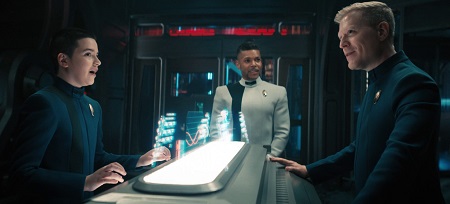
I was not a big fan of the Burnham-versus-Book relationship drama angle that began in But To Connect earlier in the season. It didn’t work for me, and I felt that the focus on Burnham and Book’s emotions, particularly in episodes like All In and Rubicon, came at the expense of other characters and other story developments. It was cathartic, then, to see the two finally reconcile in Coming Home, and I’m glad that the season didn’t end with their relationship left in question.
Because of the timing of Book’s fake-out “death,” it could have ended there and still felt satisfactory; Captain Burnham would’ve known that Book loved her, and his actions in his final moments would’ve been trying to stop Tarka and prevent an escalation of the damage he’d already done. That could’ve worked – but I’m glad that Book lives to fight another day and that they got to have a proper sit-down together and a proper reunion on Unknown Species 10-C’s planet. After a storyline that shook things up too much for my taste, a proper resolution that has hopefully set the stage for a rock-solid relationship between them in Season 5 was the least bad outcome.
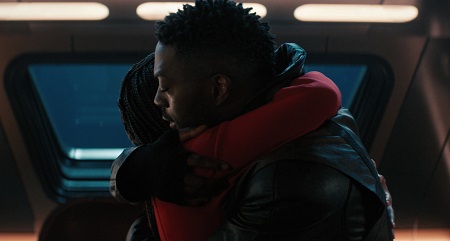
I enjoyed the speeches both Captain Burnham and Book gave to Unknown Species 10-C, and it was great that they were able to find a way to connect with a species that could have been “too different” to bridge the divide. Book’s speech after his resurrection was remarkable, and the emotion packed into each and every word resonated. David Ajala has done a great job all season long conveying Book’s grief and sense of loss, and he brought everything to bear in this scene as he came face-to-face with the race who killed his family and destroyed his home. It was heart-wrenching to watch.
Captain Burnham’s speech was likewise packed with emotion, particularly as she was still reeling from the shock of Book’s apparent death. This was definitely one of Sonequa Martin-Green’s best moments of the season, as Captain Burnham finally made contact with the enigmatic race. She had to convince them that they needed to stand down – and with just moments remaining, she was able to do so.
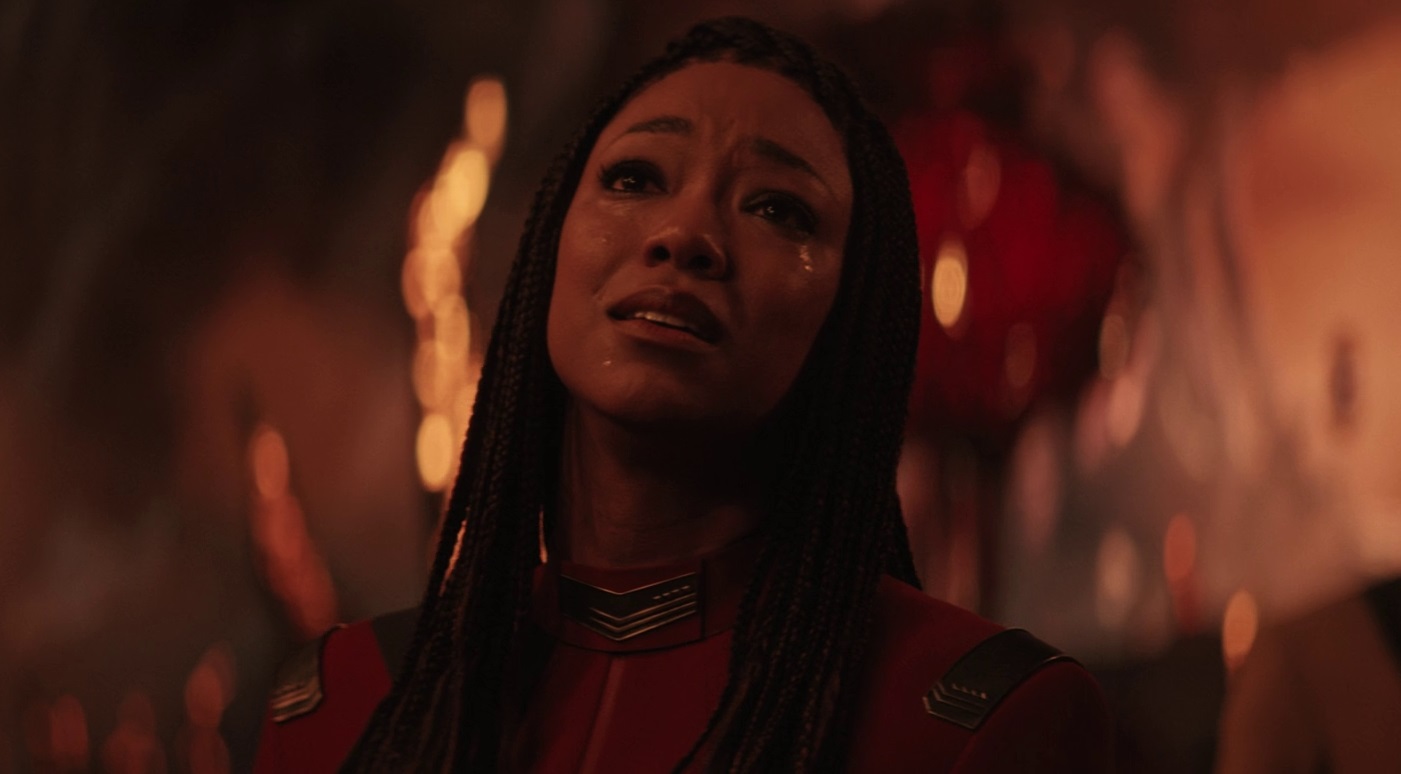
General Ndoye, who had been responsible for Tarka’s escape during the events of the previous episode, stepped up and admitted what she had done. She presented a strength of character that I wasn’t expecting given how she’d been roped into Tarka and Book’s conspiracy. The idea that the first contact mission was progressing but was sabotaged by people who were unwilling to wait was an angle that was potentially interesting – but it didn’t need to go to such extremes, perhaps.
Still, I liked General Ndoye. Phumzile Sitole played the character with a kind of hard-nosed pragmatism, and although General Ndoye was in the wrong from Captain Burnham’s point of view, it’s only because we as the audience could see what was happening that we realised that. Ndoye acted in what she believed to be Earth’s best interests based on the information she had available – she was never a villain nor an antagonist, and she remained in that complex space even while Tarka was being transformed into an out-and-out villain last week.
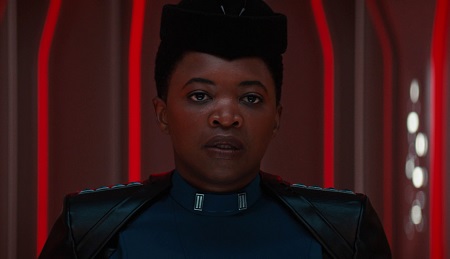
A few scattered thoughts before we wrap things up:
- Coming Home contained the first mention of the Borg in Discovery… could that be setting up something to come in Season 5, or perhaps some kind of tie-in with Picard? I can’t help but wonder! Seeing Captain Burnham go toe-to-toe with the Borg would be delicious!
- Dr Hirai felt sidelined once again, contributing relatively little to the story. This character feels like a waste of potential – someone interesting whose role on the mission made sense, but who was underused and who underwhelmed in the few appearances he made.
- The destruction of Book’s ship feels like it could be symbolic… but I’m struggling to find the intended symbolism considering that Discovery will presumably bring him back in Season 5, and the show didn’t exactly go through a soft reboot at the end of the season.
- Unknown Species 10-C definitely gave me a “sea monster” vibe.
- It was so sweet that Saru and T’Rina finally got together!
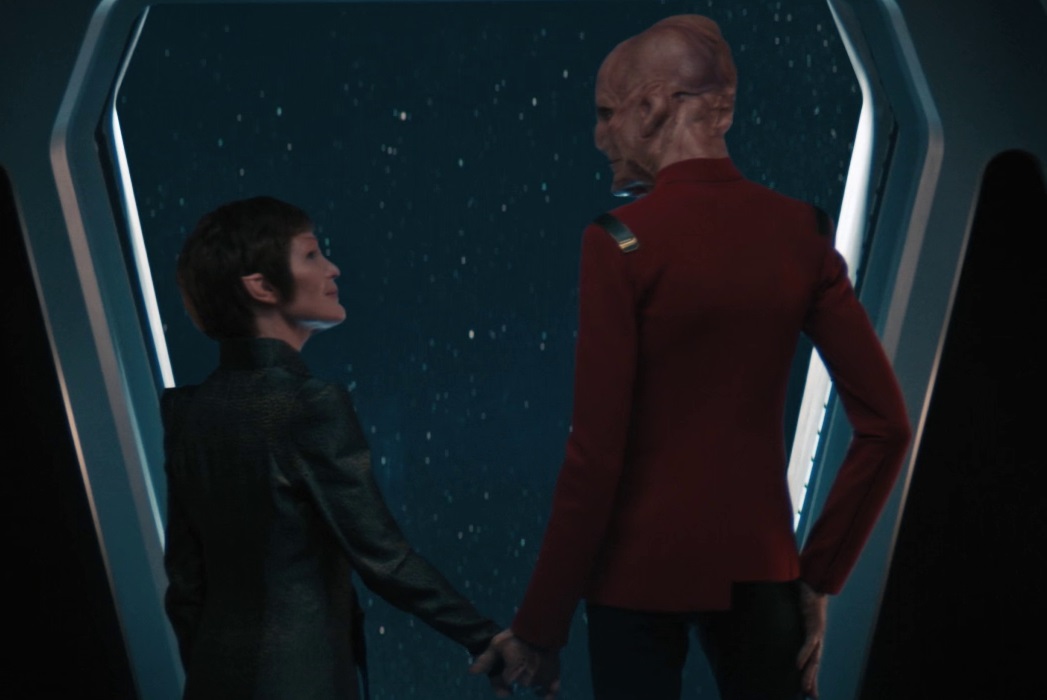
- Shutting down the hyperfield, which Unknown Species 10-C had been running for a millennium, seemed a bit quick right at the end.
- It would’ve been interesting to see Captain Burnham having to lead Discovery on a Voyager-esque mission back to Earth… but Unknown Species 10-C’s wormhole tech meant it never felt like a realistic prospect.
- I will always love seeing Admiral Vance with his family!
- The use of Grudge’s collar to escape the forcefield was a clever inclusion that felt like classic Star Trek technobabble.
- I hope we’ll see Unknown Species 10-C again and they won’t just be forgotten about in future 32nd Century stories.
- Will Federation HQ now remain permanently in orbit of Earth? Or will other planets want to have Federation facilities, given that Earth has been absent for more than a century? It could be interesting to explore such a conflict in Season 5.
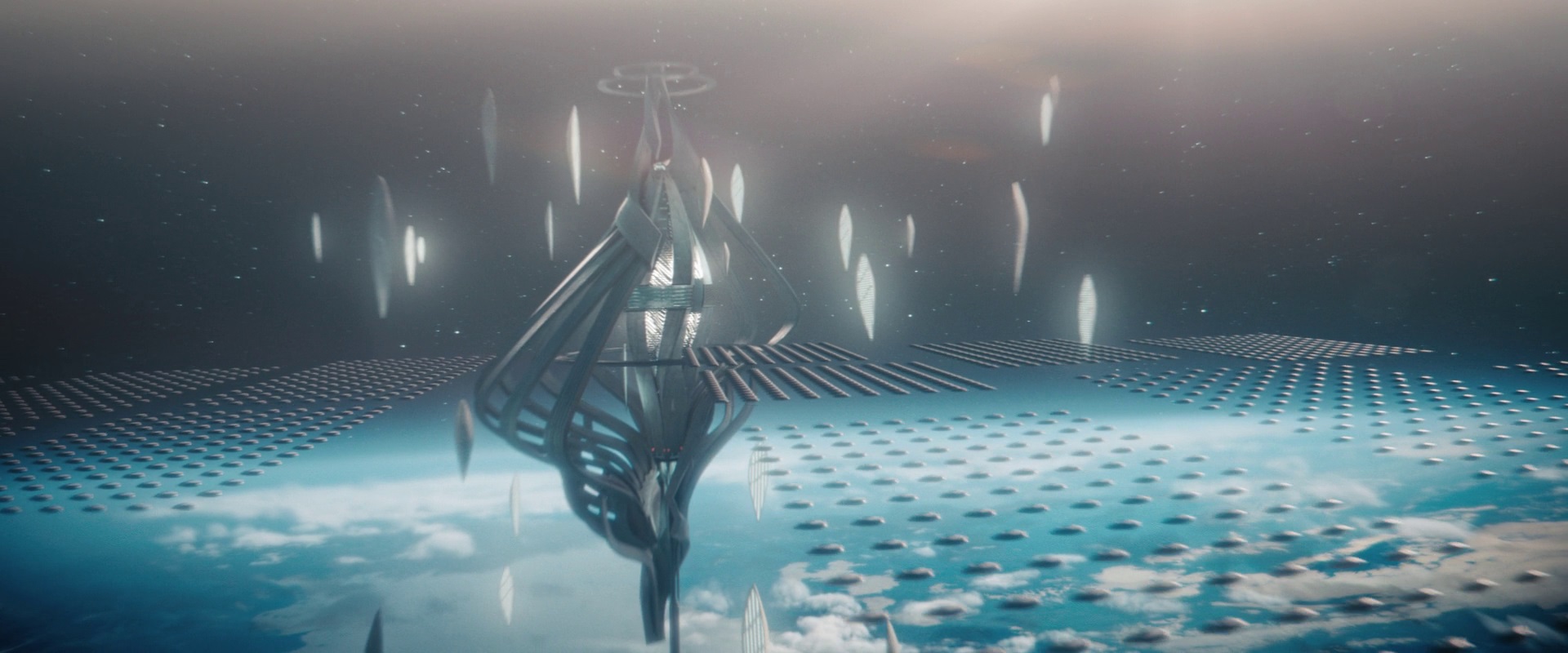
There’s a lot more to say, quite honestly… but I feel this is already running long. It’s taken me a long time – longer than usual – to get my thoughts in order, and I find that a lot of what I want to say in a more critical way is more about the story or structure of the season as a whole rather than about Coming Home specifically. It was a great episode in its own right, it capped off the season in a beautiful, emotional way, and left me with a real sense of optimism as Discovery prepares for a fifth season. But despite a solid ending, Season 4 as a whole is much more of a mixed bag, and I’d like to talk about that more on another occasion.
Coming Home was the emotional high point of an occasionally frustrating season, but it’s an episode that means we can say that things ended on a positive note. I’m genuinely excited for Season 5 and to see where the show goes next… but I hope it’s not going to be another “the galaxy is in danger” storyline! After the Klingon war, Control, the Burn, and the DMA, we’ve had enough of those.
It took me a while to get this review together, partly because of how much of an emotional experience Coming Home was… and partly because I’m feeling a little burnt out after three weeks of two Star Trek episodes meaning I was writing two big reviews! I really wish Paramount Global would sort out its scheduling…
Star Trek: Discovery Season 4 is available to stream now on Paramount+ in the United States, Scandinavia, Latin America, and Australia. Individual episodes or the full season can be purchased on iTunes, Amazon Video, Google Play, and possibly other platforms in the UK, parts of Europe, and select other countries. The Star Trek franchise – including Discovery and all other properties mentioned above – is the copyright of Paramount Global. This article contains the thoughts and opinions of one person only and is not intended to cause any offence.



